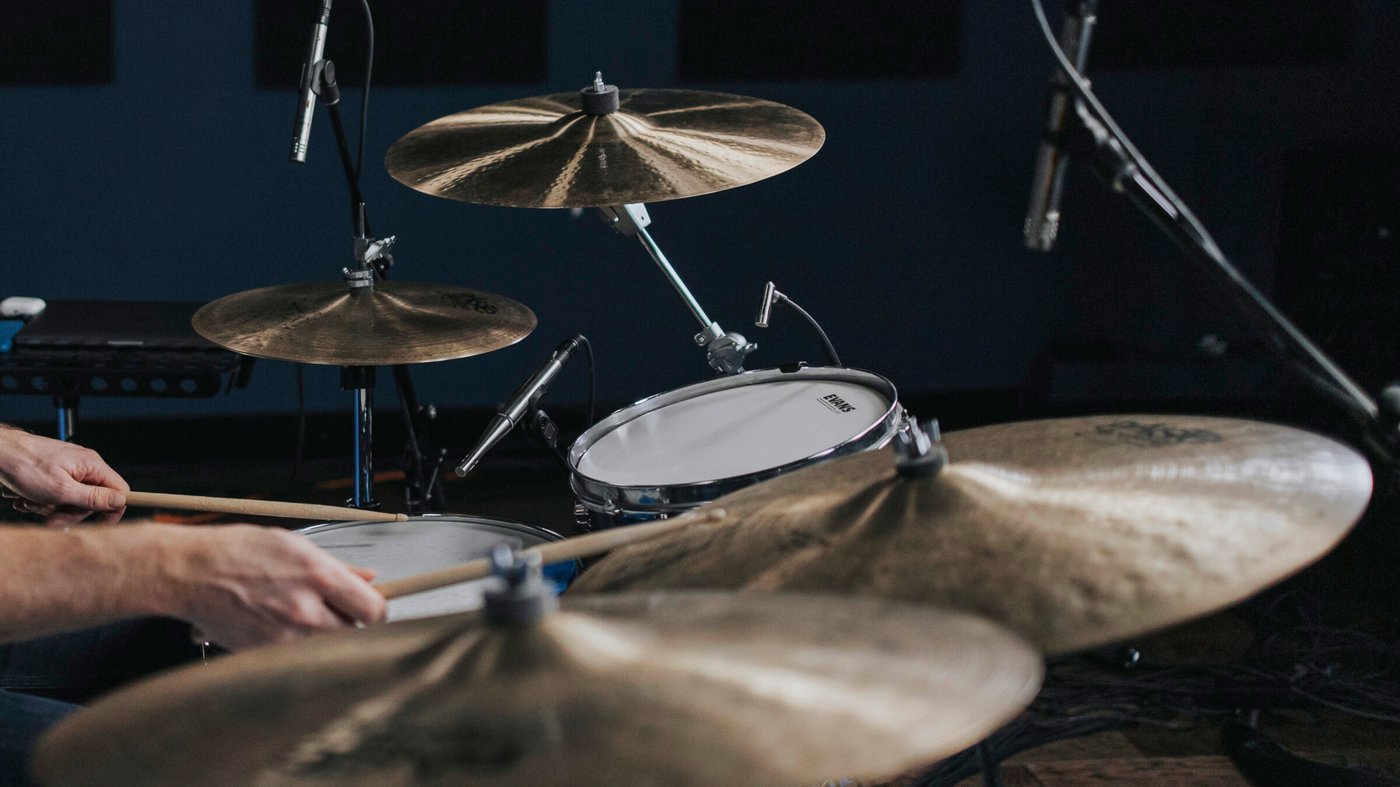
If you need new drum mics or don’t know what to buy, you’ve come to the right place!
There are so many mics on the market. In this article, you’ll find recommendations to help you sort through and narrow down your options. You’ll also find enough information to make educated decisions based on the sonic and build quality of each product, plus usage tips and upgrade paths/alternatives.
You’ll find that the mics in this guide range from budget to boutique, but I want to make one thing very clear:
You don’t need extraordinary mics to achieve an extraordinary recording.
80% of a good drum sound comes from the drum kit tuning, the drummer’s technique, and the room the drums are being played in. For a while now, even the most budget microphones, preamps and converters can offer musicians the opportunity to record themselves in high quality.
All prices in this guide are in USD.
(Beginners: If you see any words you don’t recognize, refer to the glossary at the end of this article and check out this guide to recording drums)
While there are a few mics you wouldn’t use for everything on the drum kit, being able to mix and match will give you complete coverage and help you capture sounds creatively.
Here are some points to consider for each type of microphone:
| Dynamic | Condenser | Ribbon | |
| Distortion | Can withstand loud sound sources with little distortion | More susceptible to distortion from loud sources | Very susceptible to distortion from loud sources |
| Sensitivity | Less detail when capturing intricate parts | Can respond really well to intricate, delicate parts such as embellishments on cymbals | Less detail, and because of the directional pattern they have a very “roomy” sound in comparison |
| Response | Slow response – can “compress” the attack of the drum | Faster response – will have a more accurate depiction of the drum’s attack | Somewhere in the middle of the other two, smoothing out some of the attack |
| Frequency | Less neutral frequency spectrum response | Neutral (flat) frequency response across the spectrum | They tend to roll off the high end, giving them a very soft and warm sound |
| Durability | Can take a beating | Many condenser microphones are going to be really upset if you hit them with a stick | I’ve seen an old school ribbon mic get damaged by closing a door too hard |
| Power | Almost never require Phantom Power | Almost always require Phantom Power | Just in case, avoid providing Phantom Power unless specified by the manufacturer |
Don’t worry too much about phantom power – most modern mixers, interfaces, and preamps can provide it. But always check the user manual!
If you looked at the above table and thought, “I want the highest quality possible, so I should just buy condenser mics,” keep reading. There are reasons why some microphones are more suited to some tasks than others.
Dynamic and ribbon mics can have a very specific sound coloration: they’re usually not optimal in terms of frequency response, and they don’t have the fastest transient response. But these characteristics have been present in many of our favorite songs and recordings over the past century, and listeners have come to expect that sound when listening to music.
There’s far more to know about the differences between these microphones, but if you’re somewhat new to the recording world, I’ll leave it here for now.
But there’s one more thing you should consider when choosing drum mics: Max SPL.
Drums are loud. It means we don’t have to worry about choosing high sensitivity microphones. But it does mean we have to bear in mind at what point the mic starts distorting.
Thankfully, engineers have access to SPL (Sound Pressure Level) meters, which give you a reading in dB SPL. You can buy these meters online and most music shops, but you can save some money by getting either the NIOSH app or the Decibel X app on iOS and Android. If you don’t have one, as a drummer, I recommend getting one to find out how loud your drumming really is.
If your drums are hovering around 110dB SPL, picking a microphone with a maximum SPL lower than that will lead to immediate distortion and clipping – even if you’re placing that mic far away from the drums (room mics or overheads, for example). Similarly, if you pick a microphone that has a maximum SPL of 120dB SPL and place it near your kick or snare, the microphone will likely not have enough headroom and distort immediately. This is because sound decays 6dB each time you double the distance from the sound source.
Mics designed for drum kits have a maximum SPL above 120dB and often sit in the 140-155dB SPL zone. If your sound is distorting at the source, it’s worth checking if your microphone can accommodate high SPL levels, and replacing it with one that has a higher max SPL specification.
Many brands offer bundles that include everything you need to mic up your drum kit in a portable case. Some brands – like Sennheiser and Shure – offer both a budget bundle and a better-quality bundle that include the mics loved and used by engineers around the globe.
Consider these two things when buying a mic pack:
In addition to the bundles themselves, you’ll also need mic stands and XLR cables (I’m assuming you already have a mixing console or an interface with enough microphone inputs for the drum kit).
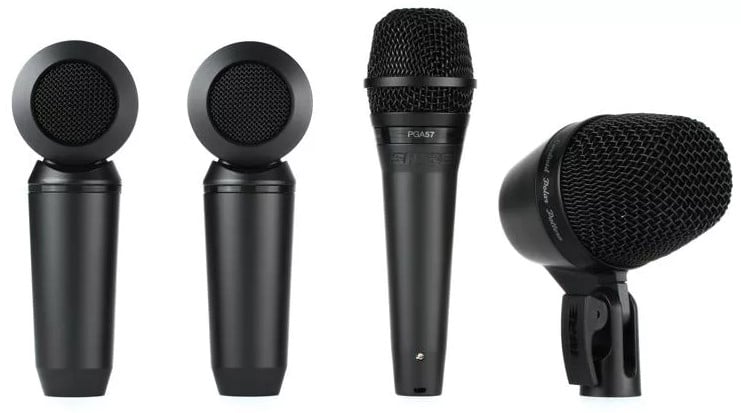
Not only have I used these microphones plenty of times in rehearsal rooms and live sound situations, but these were also the ones handed out to students during their first assignments at a popular audio engineering university I worked at – and I’ve heard many incredible recordings done with these mics.
They can take a beating and come with cables, but unfortunately, they only cover a 4 piece drum kit and do not come with overheads. I highly recommend budgeting for an extra Shure SM57 microphone and a pair of overheads if you decide to purchase this pack.
If you have a 5 piece drum kit, check out the Shure PG Studio Kit 7, a $500 offering that comes with an extra tom mic and a pair of overheads.
If you own this kit and want to upgrade, or have the budget for something nicer, any of the middle of the road bundles would be a good option.
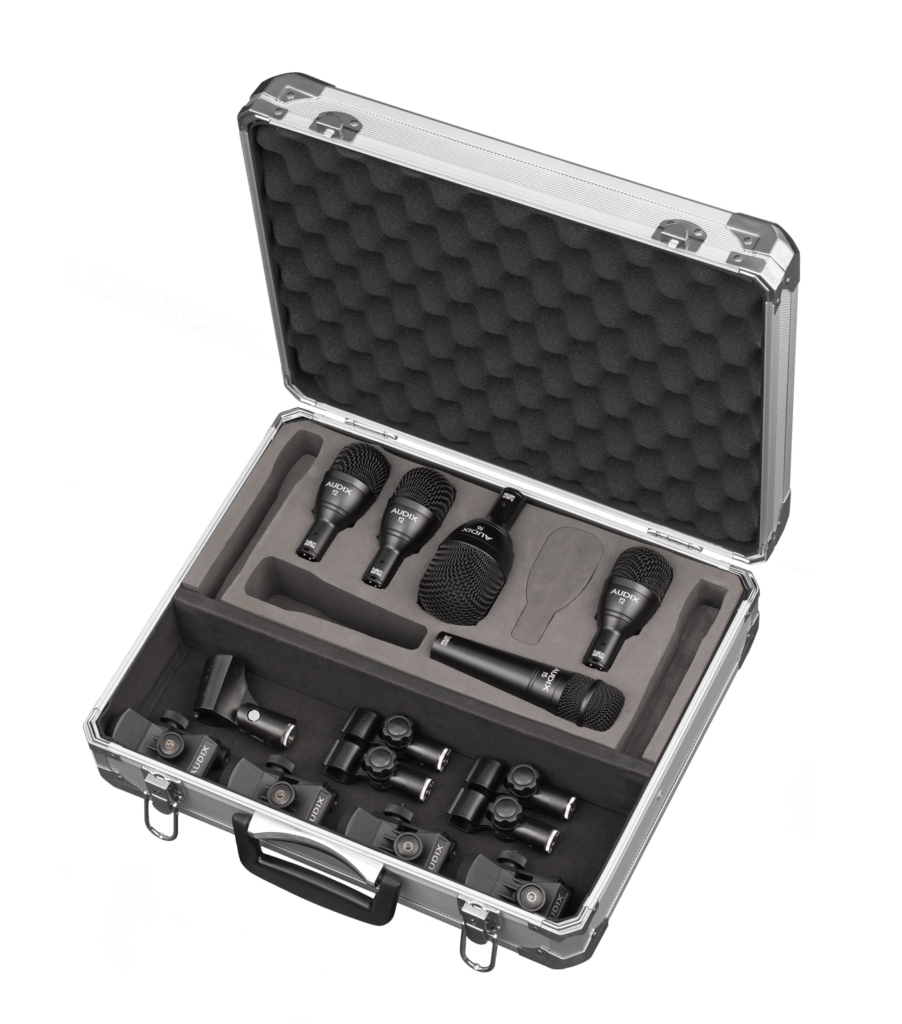
This was the first drum mic kit I bought when I first opened a project studio. I’ve also taken these with me on small tours. They’re not quite as nice sound-wise as the Audix DP series, but in my opinion, they offer a small upgrade to the PG Studio set in terms of sound.
They can also stand a beating and this pack is designed for a 5 piece kit. But, just like the Shure PG Studio Kit 4, it doesn’t come with overheads – so make sure you budget for a pair!
The Audix FP7 is a $499 offering of the same bundle that includes overhead microphones. But if you can, budget for a pair of solid overheads and get the FP5 instead, as the overheads in the FP7 kit will likely be the first thing you’ll try to upgrade, followed by the snare and kick mic. The overheads included in the FP7 can be especially finicky with brighter cymbals in harsh-sounding rooms.
These bundles include microphones that have become drum recording classics in their own right.
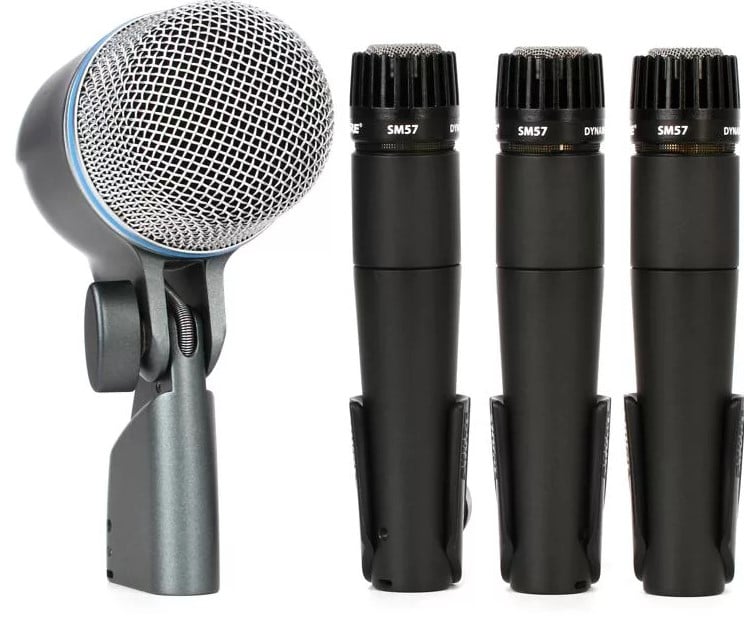
This Shure offering is a huge step up from the PG Studio Kit. It includes the classic Beta 52, which is an absolute beast of a kick drum microphone. It also includes 3 Shure SM57s, which is the absolute workhouse dynamic microphone for the studio or live. They’re perfect for snares, will do a great job on toms, and if you ever decide to upgrade they can be used for cajons, side snares, hi-hats, timbales, and other louder percussion items (not to mention guitar amps, harmoniums, and even vocals).
You get 4 roadworthy microphones, 2 of the most popular microphones in their class for kick and snare, and a plethora of microphone clamps (which save you from needing microphone stands).
Unfortunately, you’ll have to budget for 2 overhead mics and an extra SM57 if you have a 5 piece kit. But all in all, you get a lot of value in this kit and can’t go wrong with these classics.
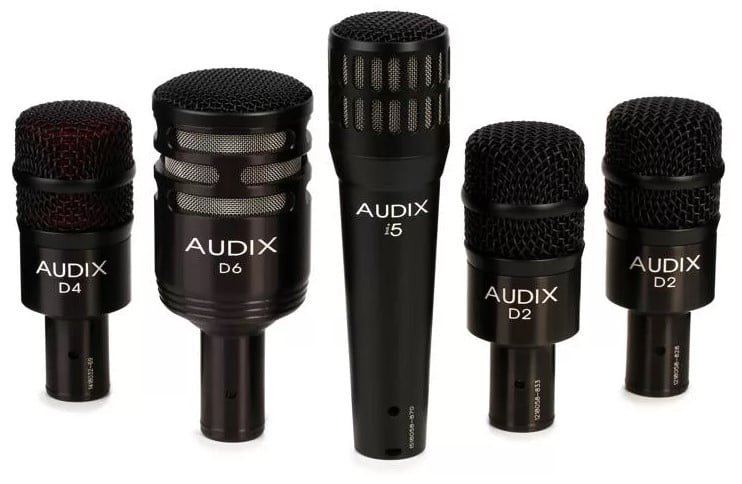
This kit includes the fantastic Audix D6 kick drum mic, as well as the Audix i5 snare mic. It also includes a dedicated floor tom mic that has a bit more extended low-end frequency response. The kit is worth it for the D6 and i5 alone if you’re after a modern rock/metal drum sound, and includes enough microphones to cover a 5 piece kit.
Unfortunately, it doesn’t include overheads. But Audix offers the Audix DP7 ($999) that does. While the overheads offered in the DP7 pack are good, you might still look for an upgrade at some point down the line.
Fear not: the ADX51 (included in the DP7 bundle, or $249 on its own) can still be used as a spot mic (for instance, your hi-hat and ride) if you do decide to upgrade your overheads. If you like the sound of this bundle but would like something better, I’d recommend looking for the Audix Elite bundle (see next section), or sticking with the DP5 bundle and choose your own overhead microphone pair.
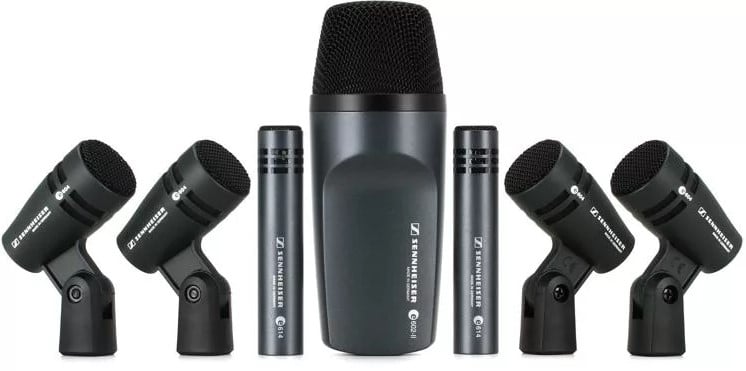
Another offering that brings some of the most popular mics to your drum shells. If you look at old Drumeo videos, you’ll find the e602 used on the kick and the e604 used on the toms extensively.
These mics are so widely used that you’ll hear more about them later in this guide. They’re rugged, can withstand a beating and the abuse of the road, and come with clips so you don’t need to purchase stands.
This pack comes with a pair of decent condensers for overhead duties, but not enough mics for a 5 piece kit. I strongly recommend budgeting for a Shure SM57 as your snare top microphone if you decide to get this bundle.
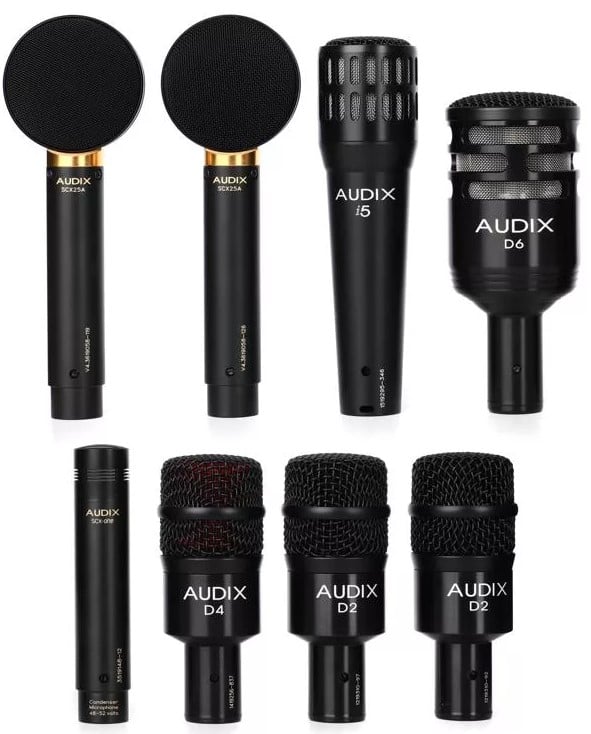
The Audix D6 and Audix i5 are stellar products and established kick and snare mics. The D2 and D4 are designed with toms in mind. But what makes this kit “elite” is the introduction of two SCX25-As for overheads, and an SCX1 (marketed as a hi-hat microphone, but also good as a ride, percussion, or general cymbal spot mic).
I like the SCX25 so much I’d recommend it for a variety of other things, including as a piano mic (as advertised by Audix).
With this bundle, you’ll be set for live micing and most commercial recording needs. Just don’t forget to add a few stands and cables to your shopping basket.
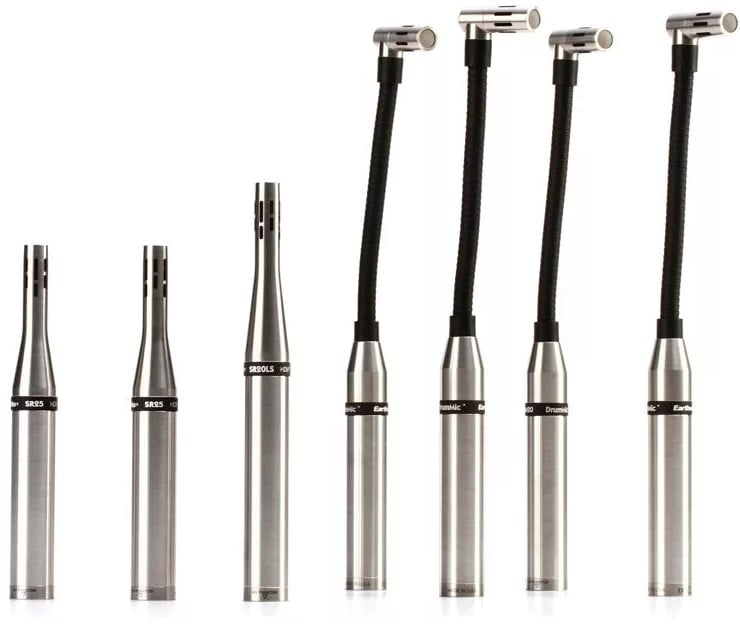
You won’t get a more clear and accurate “high fidelity” set of microphones around your kit that’s this free of distortion from high SPL sound sources. These mics also have an amazing rejection of sounds from other sources, minimizing spill.
They’re small, sleek, and have a beautiful finish that look great in videos.
This is the perfect starting point to get clean, high definition drum recordings. You can always add mics that bring character and color to your collection if and when you need it.
Do you have an unusual setup, want to tailor your sound capture, want to update your budget mics or extend your current mic collection? Then let’s expand beyond bundles and look at some great individual options.
The next section will cover some of the most popular mics for each part of the drum kit, their sonic characteristics, tips for use, and how you can upgrade from there.
Given the importance of the bass drum in modern music, it’s no surprise you’ll see quite a few mics in this section. While quite a few models are capable of taking on both responsibilities of an internal kick microphone (will call it Kick In from now on) as well as a resonant head kick microphone (which I’ll name Kick Out), some are specifically designed for one or the other.
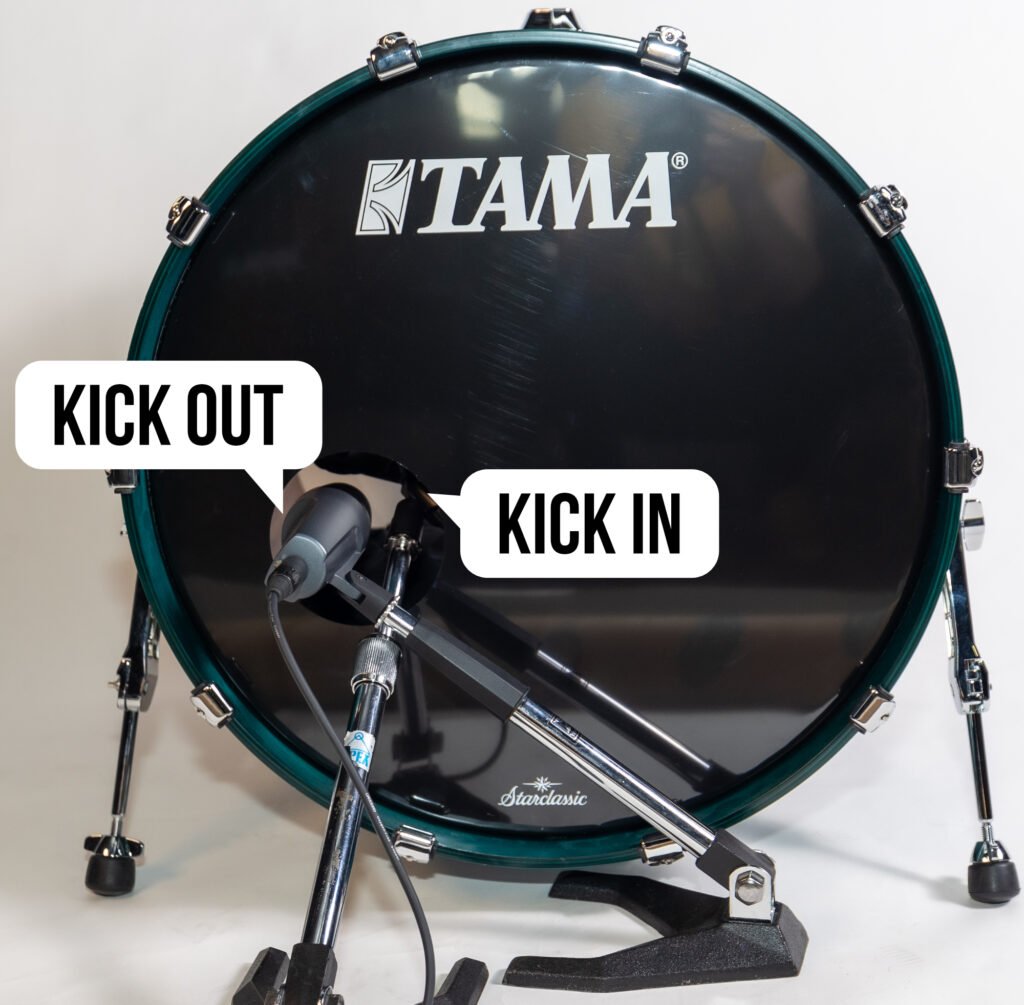
You’ll notice most of these microphones are fairly large, but nearly all of them are still dynamic microphones (specifically, large diaphragm dynamic microphones). There are many factors behind the frequency response of dynamic mics, but you should know that in general, large diaphragm models move the resonant frequency lower, which allows the manufacturer to more easily tune the microphone to have increased low end response.
| Recommended Kick Drum Microphones | ||
|---|---|---|
| Brand/Model | Use | Price |
| AKG D112 | Kick Out, Kick In | $199 |
| Audix D6 | Kick Out, Kick In | $200 |
| Sennheiser e602 | Kick Out, Kick In | $149 |
| Shure Beta 91A | Kick In | $239 |
| Electrovoice RE20 | Kick Out | $449 |
| Neumann U47 | Kick Out | $4000 |
| Yamaha SubKick | Kick Sub | Used only |
| Solomon LoFReQ Sub Mic | Kick Sub | $199 |
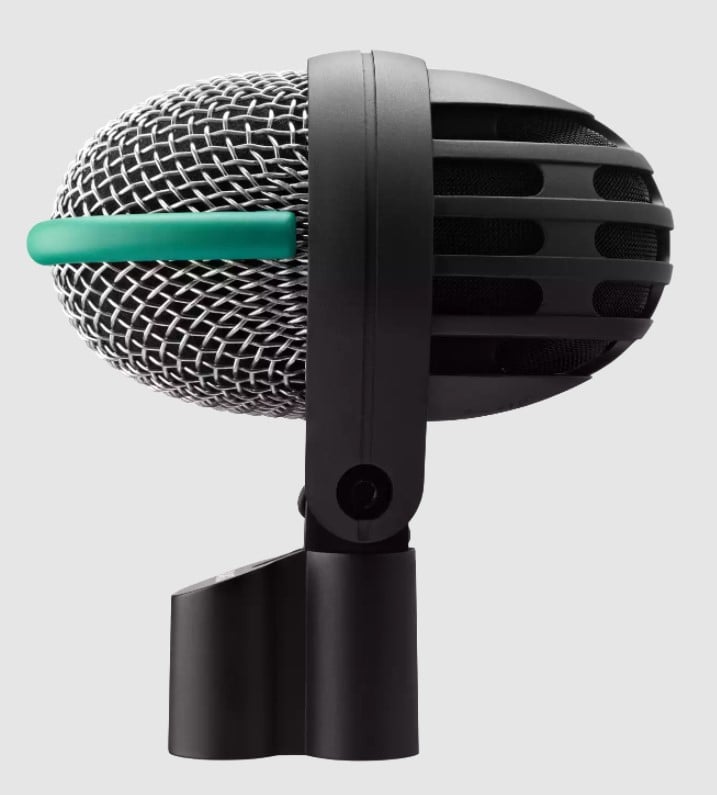
I describe this mic as a very “loose” one. It has a nice, extended low end response. But it’s very different from all the other mics in this section.
For some reason, if you do a direct comparison between all these mics, this one will feel the softest, looser on the low end (favoring that decay) and will not be very fast at responding to transients – making it a better choice for genres where you want a softer feel on the kick.
Drumeo also uses this mic extensively as a Kick In microphone. As their Production Director, Taylor describes it:
“We use the D112 because it captures the “knock” or the high end of the kick drum so well. We use it inside the kick drum and point it right where the beater meets the head. And because it has a bump at 5k in its frequency response, it just naturally captures the sound we want without having to mess with an EQ too much.”
If you’re looking for an alternative kick mic that’ll give you a similar soft, low-end resonance, try the Electrovoice RE20, or for Kick Out applications: a large diaphragm condenser like the Neumann U47 FET, Neumann TLM 170 or similar – just make sure you build a little isolation tunnel around your kick drum and Kick Out microphone.
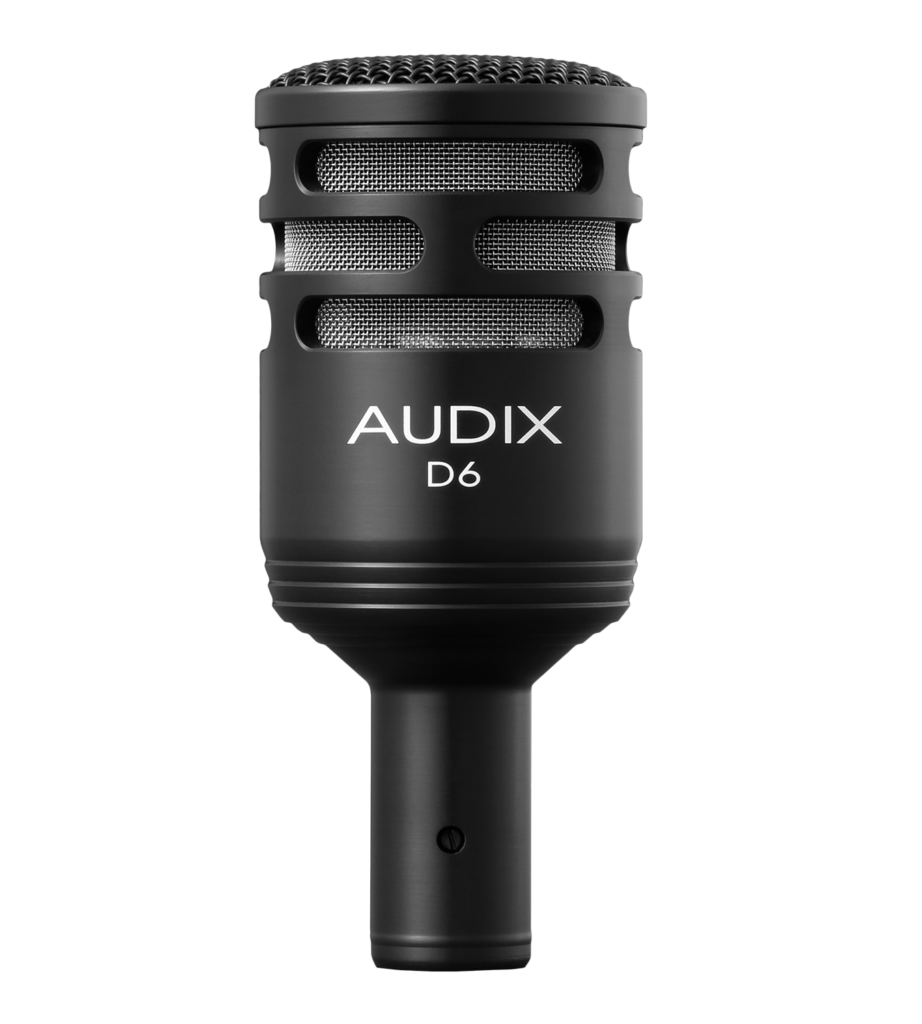
A good friend of mine turned me onto this microphone when I was on the road with a metal band. He told me that it was just incredible for loud, in-your-face kind of kicks, and it sounded like the kick had been EQ’d and compressed for you.
That mic was the Audix D6, and it didn’t disappoint! For more budget shows where I had limited or no access to the outboard gear (back in the analog days where renting a rack full of processors wasn’t cheap) this mic saved my life over and over.
It works great as a Kick Out or Kick In mic. The attack is clear and punchier than the Shure Beta52A with plenty of low-end energy to drive the kick through a busy mix or a PA system. It also pairs great with the Beta52A (for Kick Out) when used as a Kick In microphone.
Like the AKG D112, if you’re looking to ‘upgrade’, you have a choice of looser/softer low-end mics like the Electrovoice RE20 and AKG D112, as well as a more well-rounded Shure Beta52A.
The Neumann U47 or TLM170 would be the ticket for Kick Out microphones, and the Shure Beta91A (a microphone designed for Kick In duties) if you feel you need a better transient response.
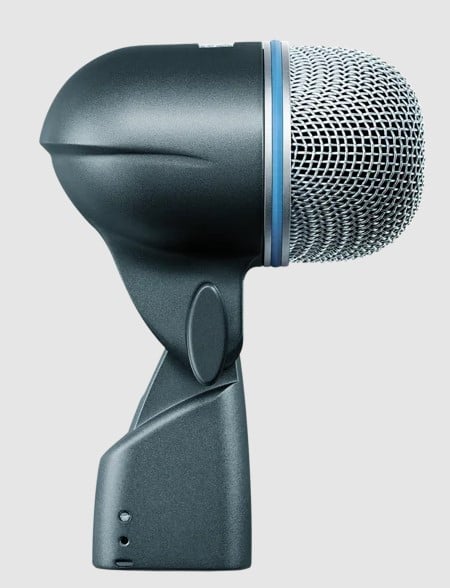
I first used this microphone in 2005. I was on the road with a hard rock band and we had been using the AKG D112 on the kick when we came across a rental company that had this beast in their microphone case. I was blown away. I now trust this mic for Kick Out duties for any modern band that requires a precise hit with plenty of low-end response.
It’s the microphone I have on my bass drum 24/7, and it pairs brilliantly with an Audix D6 or a Shure Beta92 as a Kick In.
I’d only upgrade from this microphone if I was after a different sound (like the Audix D6 and the AKG D112), or if I’m in a situation where I can make use of large diaphragm condensers such as the Neumann U47 FET (getting into boutique territory here). Even in these cases, I tend to leave the Shure Beta52A near the porthole if there is one.
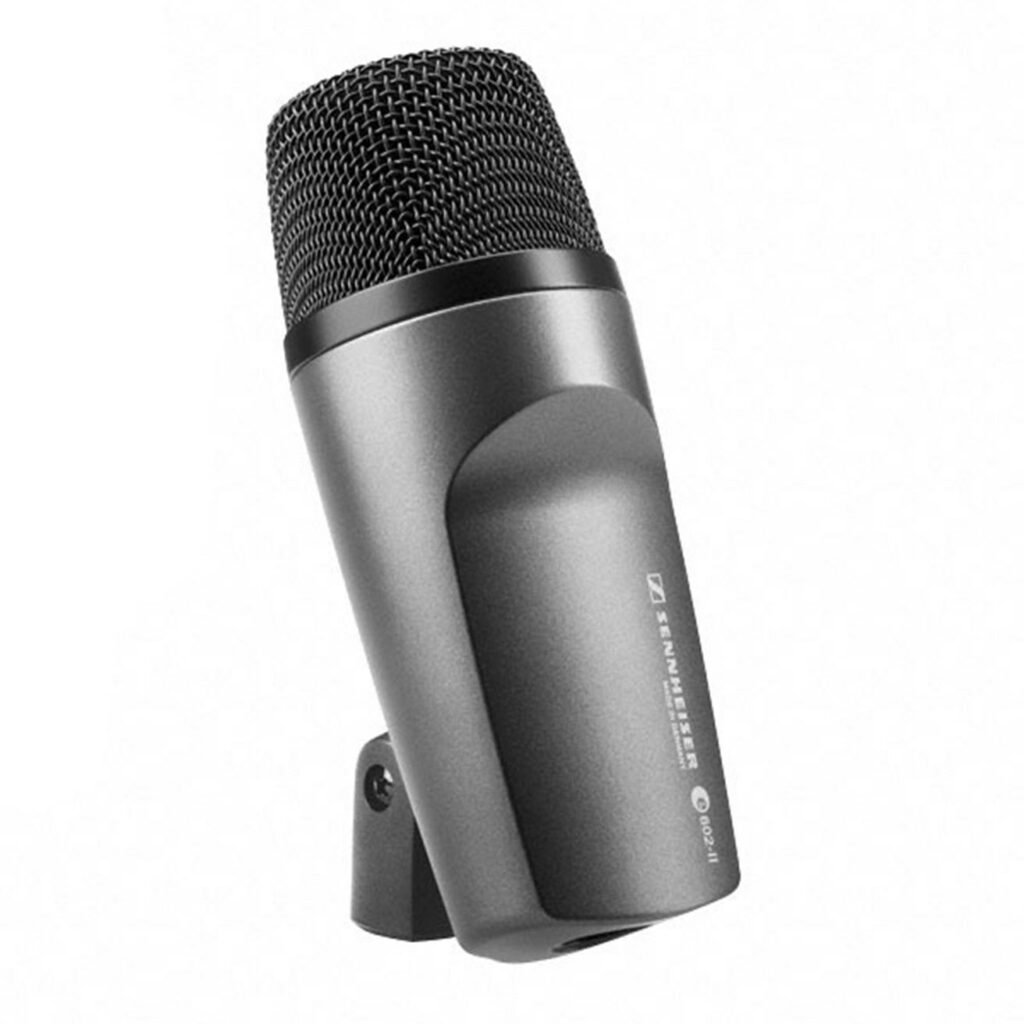
A standard Kick Out option, you’ll find it by the resonant head hole of many kick drums, and you can hear it in action in many of Drumeo’s older videos.
This mic is slightly softer and looser than the Beta52A, but more precise than the AKG D112. It’s also quite scooped in the mids, which might help you minimize the amount of EQ needed with a really resonant kick drum.
Mixing the D112 with the e602 (which captures the overall vibe and feel of the kick drum) just seems to work so well. Add a LoFReQ sub kick mic in the mix and you have everything you could need for almost every situation.
Sometimes you just need the smack of the beater hitting the batter head. That click is going to be driving the track or preventing the attack of your kick drum from getting buried when other elements of the production kick in (or the drummer does really fast double bass passages).
These microphones are usually placed really close to the batter head (the Audix D6 is a great example) or on a mount like the Kelly SHU or the Sledgepad Mic Tray.
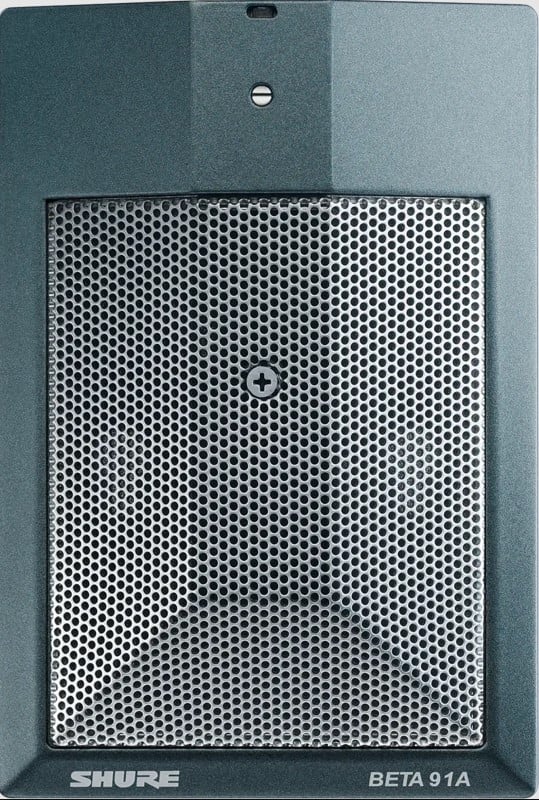
I love this mic. You get a very detailed transient from the batter head, but also a nice representation of the kick drum shell resonance, as well as a nice amount of low end. I recommend using a very small amount of dampening (like a small hand towel, a Sledgepad Mic Tray, or a Kelly SHU) and place this mic on top.
I honestly don’t think there are many microphones on the market as suited for the task as this one. While a Shure SM57 and an Audix D6 will do the job, this little condenser microphone can withstand 155dB SPL to get the extra little bit of detail that large diaphragm dynamic mics might not allow us to capture.
All microphones specified as great all-around mics will do great here: the AKG D112, the Shure Beta52, or the Audix D6. However, there are a few mics that can really bring something special to the table as a Kick Out:
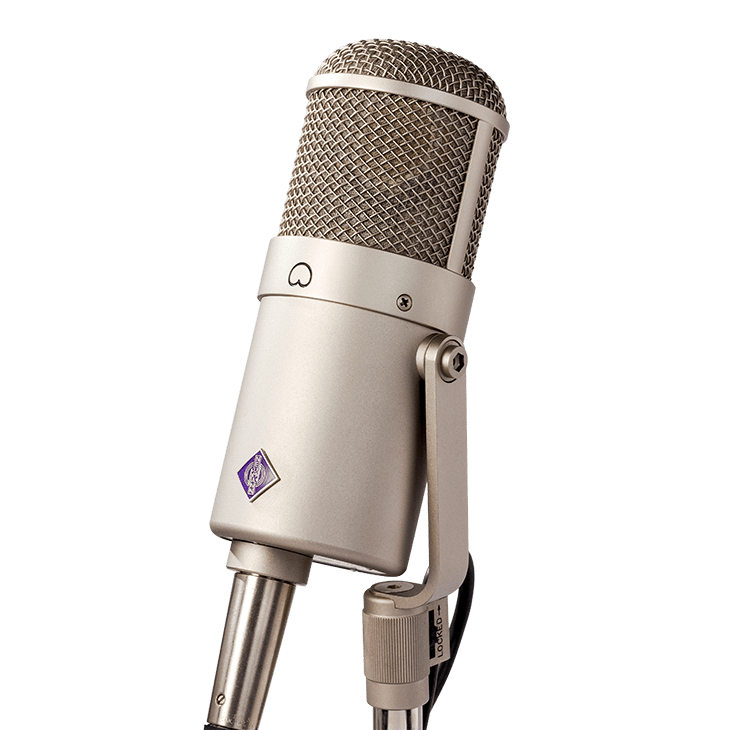
Expensive. Legendary.
But it’s a gorgeous microphone for a Kick Out. Just be mindful of the low-ish Max SPL (you’ll likely need to use the pad on your preamps or add an inline attenuator) and you might have to make a kick drum tunnel in order to reduce spill from other parts of the kit.
Large diaphragm condenser mics bring up the details of the room in the signal they capture, and the nice saturation this mic imparts on louder signals makes it for a round, detailed, and rich low-end tail. It’s also slightly darker than most other condenser microphones, so it doesn’t do anything too crazy to the spill that you’ll inevitably capture.
Alternatively, the TLM170 is a brilliant mic to use for similar reasons, although a bit more ‘aggressive’. You absolutely don’t need this microphone on your recordings, but if you can afford or use one, give it a go – you won’t be disappointed.

This isn’t a bad microphone to have around the studio. It’s great on vocals, bass cabinets, some guitar cabinets, floor toms, and Kick Outs – especially in genres where people play the kick softly.
It also holds its own for more aggressive genres, but I don’t find it as focused or as snappy as the Audix D6 or Beta52. If you’re on a budget and require microphones that work well with other instruments, this is one such mic.
It’s a good upgrade for the AKG D112, especially if using something like a Neumann U47 is not an option (for instance, live situations).
Kick sub mics are easy to put together, and the concept is pretty simple. If you wire a speaker as you would a microphone, then you just made a dynamic microphone. The downside is that the speaker cone and magnet are many times heavier than the diaphragm you’ll find in dynamic microphones.
What does that mean for the sound? For starters, expect a very slow transient response and a significantly reduced frequency response. This makes it great for capturing the kick’s low end without much spill from cymbals, snare drums, etc.
Because of the physics of the speaker cone (and the speaker enclosure itself), the speaker will vibrate easily to very low frequencies (eg. around 60Hz).
You can get any 6-8” speaker and wire it up to a male XLR plug. Mounting it can be trickier. You could use zip ties and a short mic stand with the boom horizontal, and hang the speaker cone off the boom.
If you’d like to get fancier (like increasing the low end response by increasing resonance, or tweaking the main resonant frequency), you can build a speaker cabinet to house the speaker. The size of the cabinet/box and the size of the port hole (if any) will change the resonant frequency and the amount of resonance captured by your homemade subkick.
If you want to get really fancy, try and get an original Yamaha NS10 speaker. These speaker cones have an interesting resonant frequency that make them great candidates – perhaps the reason why people started building kick subs all those decades ago.
If you don’t want to build your own, here are two really good commercially available options:
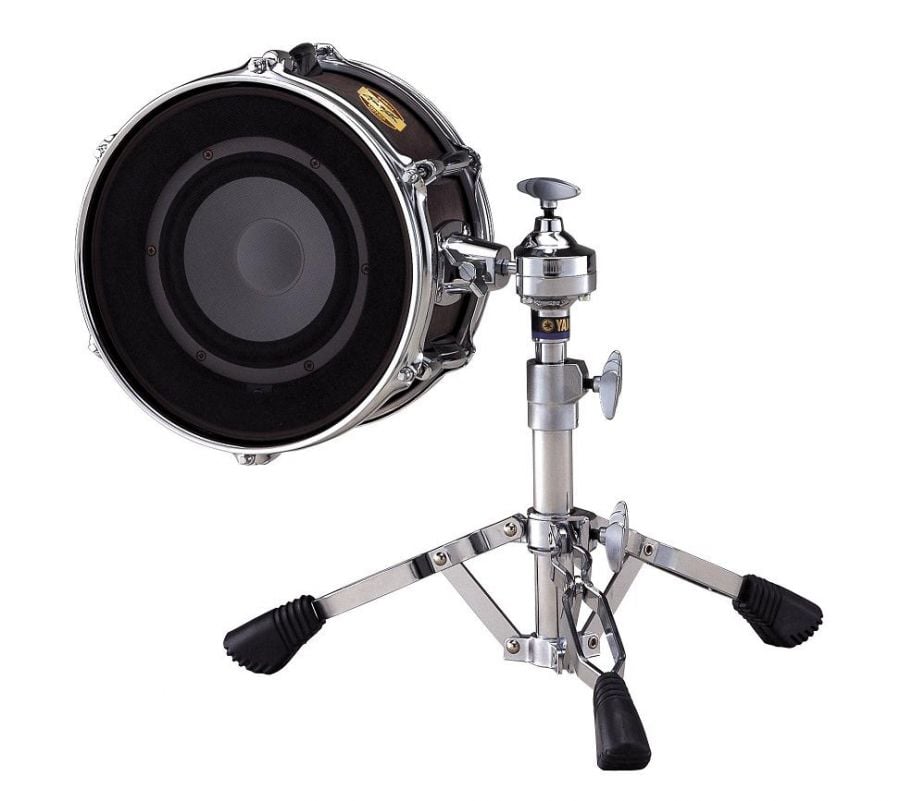
It’s been around for many years and it’s absolutely roadworthy. Many engineers will immediately recognize how it sounds and what it does to the drum kit.
Yamaha no longer manufactures these subkicks, but they’re very common on the second hand market.
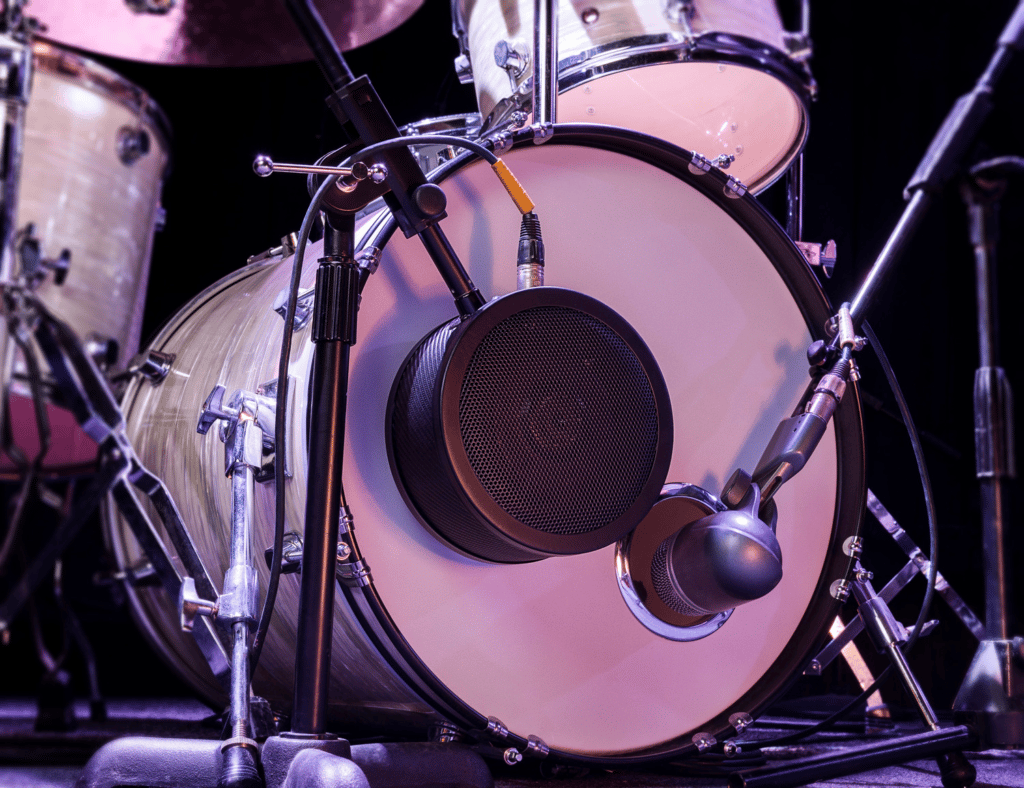
A more recent entry to this category, I personally find that the Solomon has a more focused sound and better transient response than its counterparts, and noticeable spill rejection.
It’s had a lot of praise, and unlike the Yamaha Subkick, it’s still in production!
Before getting into snare mics, I want to say one thing: you can’t go wrong with a Shure SM57.
After that, it’s about sound preference. Or trying to get some characteristic the engineer prefers to that of another microphone.
You can always add more than one microphone on top and blend it to your heart’s content, as well as add a snare bottom microphone, focused on capturing your snares.
I have a few Wilkinson Audio mic clips for the dual snare top setups, but even tape will do. Just put some rubber between the microphones so they don’t grind against each other.
Don’t forget to flip the phase of the snare bottom mic in relation to your snare top mic. Otherwise, you’ll lose a lot of the low-end on that snare.
| Recommended Snare Drum Microphones | ||
|---|---|---|
| Brand/Model | Use | Price |
| Shure SM57 | Snare Top, Snare Bottom | $99 |
| Shure Beta57 | Snare Top | $139 |
| Audix i5 | Snare Top | $99 |
| Shure SM7B | Snare Top | $399 |
| Neumann KM184 (KM84) | Snare Top, preferred as a second mic | $799 |
| Neumann U47 | Snare Top (for drummers who play with dynamics) | $4000 |
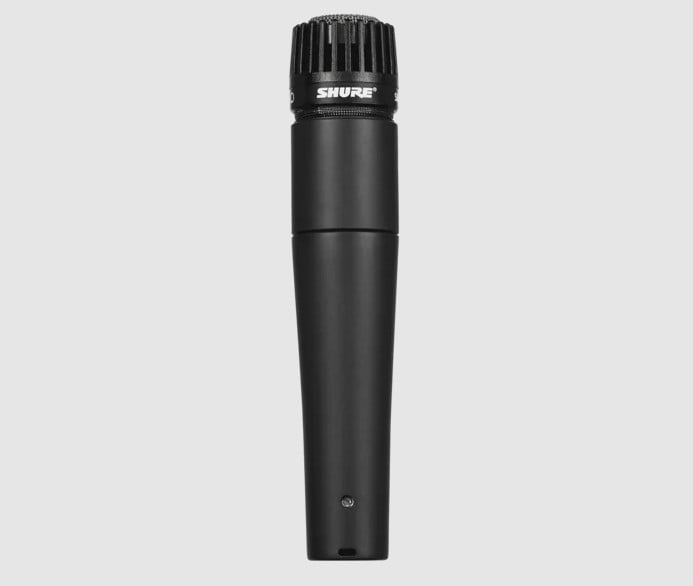
If you could have one mic to rule them all, the SM57 is nearly indestructible, one of the best all-around mics, and one of the most sold in the world since 1965. You can never have enough SM57s. They’re great for vocals, guitar amps, Leslie cabinets, brass instruments, snare drums, toms, cajons, hi-hats, percussion, and even acoustic guitar and similar instruments (in a pinch).
Shure’s policy says that their dynamic mics should never distort in real world applications. So they don’t disclose the max SPL in the tech sheet, but you can be sure that this microphone can stand a very high SPL without distorting or otherwise degrading the signal, and it has a fairly accurate transient response for a dynamic microphone – all without breaking the bank.
It’s one of the most widely used – if not the most used – mics for snare drums, both top and bottom.
If you feel the need to upgrade, the Shure Beta 57A isn’t much more expensive, and I find it has a slightly better transient response, flatter frequency response, higher output, and a super-cardioid pattern which can help you achieve less hi-hat spill when capturing your snare drum.
If you want to get the “thump” you hear in metal recordings, the Audix i5 and the Shure SM7 are good choices.
If you need a more open and detailed sound with higher rejection from other sound sources, the Earthworks offerings are probably your best bet, or pairing a small diaphragm condenser with the SM57
This cheap upgrade from the SM57 has more low-end response than the Shure SM57, but less presence and top end. It also has a hotter output and a slightly more focused polar pattern which can help isolate your snare sound.
For alternatives, see the Shure SM57 section.
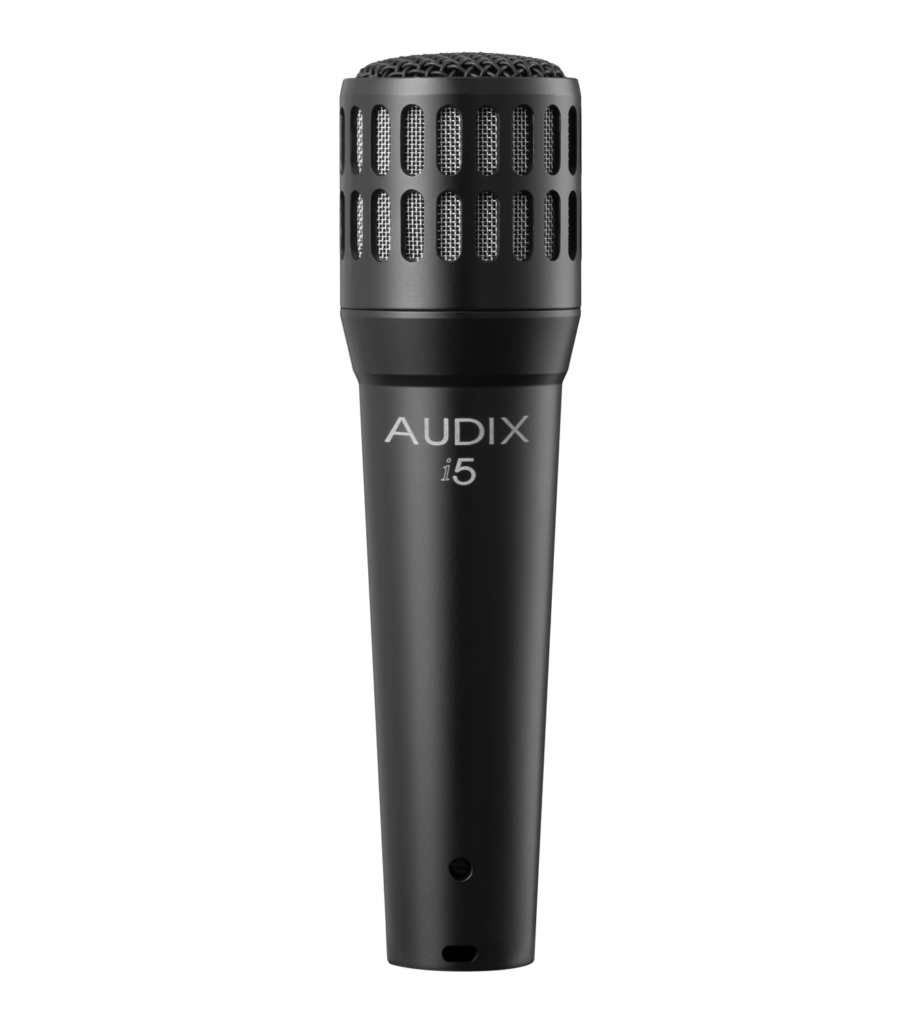
This is a beast of a mic for modern music production. As with the Audix D6, this microphone has a sound of its own: a pre-EQ’d frequency response and an almost ‘pre-compressed’ feel that’ll help your snare drum get that snap.
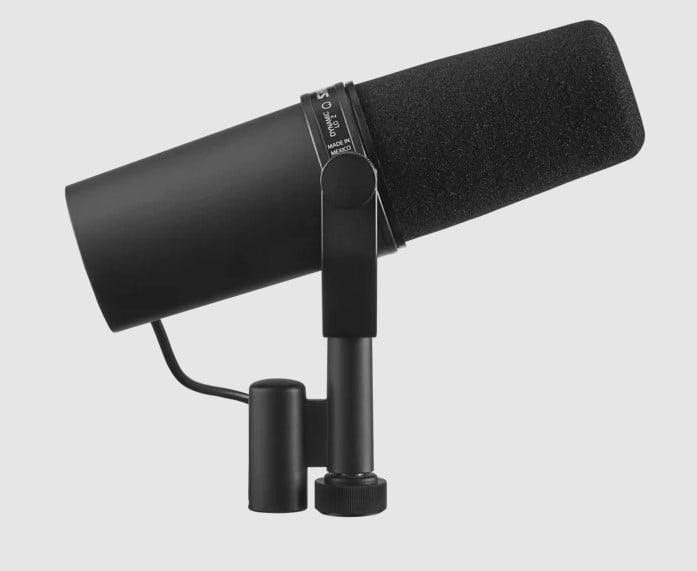
Because of the sheer size of this mic, it might be hard to squeeze it in if the drummer has a lot of rack toms. But if we’re talking about needing a snare drum that slams even more than the i5, this is a good way to get it before diving into processors and sample reinforcement/augmentation.
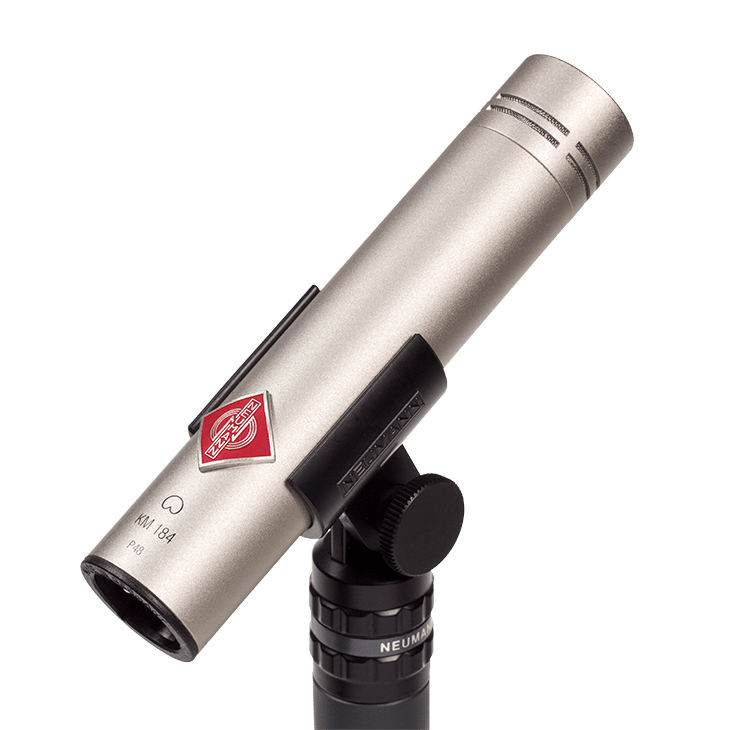
I’ve often used a small diaphragm condenser alongside a dynamic for better transient representation and a more open sound, especially if the drummer plays a lot of intricate parts on the snare or has a wider dynamic range (from very loud back beats to soft ghost notes).
However, this only works when the drummer has a very good control over their dynamics, and can keep cymbals in check – namely the hi-hat. If this isn’t the case, you might want to skip this mic.
Similar models are the DPA4011 and the AKG C451, or for those of you on a budget, the Sontronics STC1.

This is a fantastic microphone: warm, good saturation, and picks up a nice and full sound. It’ll get all those lovely details from the shell, or if the drummer is playing with brushes. I’ve put this microphone on snare drums more than once when recording soft jazz bands, ballads, and blues, and it did not disappoint.
The downsides to this mic aside from the high price:
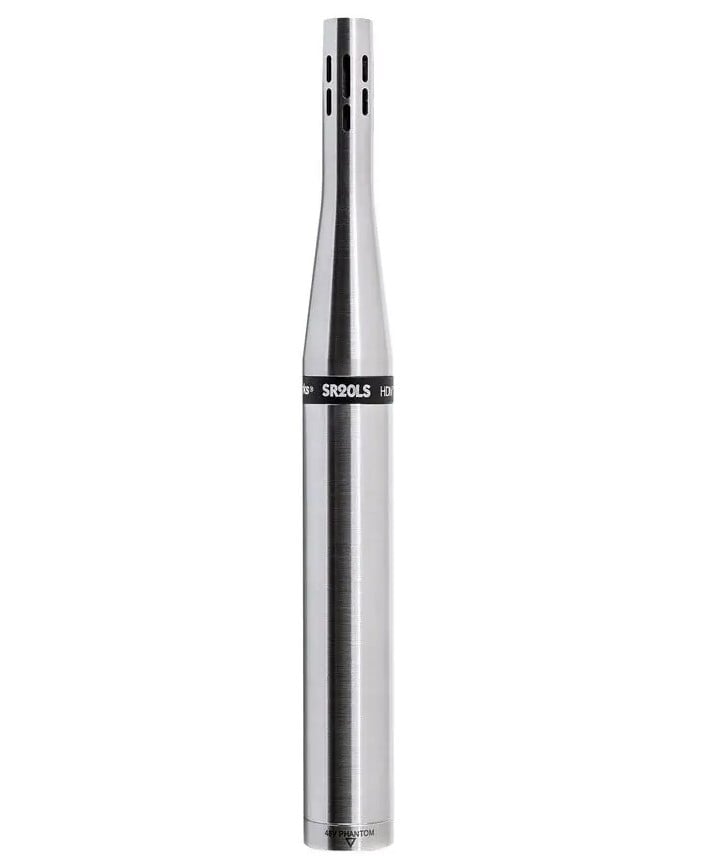
This is the exact model used in Drumeo videos. And yes, this is the Earthworks microphone that is designed and marketed for kick drums!
It has a very high SPL rating, but also presents us with a smoother roll off on the low end frequency response that can come in handy when dealing with really big sounding snares and loud backbeats.
If you use a special mount like a Wilkinson Audio mic clip, you can place two small microphones next to each other. Popular choices for this are small diaphragm condensers (which will be covered in the next section) like the Sontronics STC1, AKG C451, or Neumann KM84 (KM184).
Some of them are plain cheap, but they work, and are so widely used that you should have no problem finding them. Some are expensive, but they’re absolute classics that have been on nearly every recording for the last few decades.
The only ‘newcomer’ to this list would be the Earthworks DM20, and I’m going to say it: if your rack toms need to be captured with crystal clear high definition, and spill is a big issue for you, spring for the DM20 immediately and you won’t regret it.
| Recommended Tom Microphones | ||
|---|---|---|
| Brand/Model | Use | Price |
| Sennheiser e604 | Rack Toms, Floor Toms | $149 |
| Sennheiser MD421 | Rack Toms, Floor Toms | $349 |
| Earthworks DM20 | Rack Toms, Floor Toms | $349 |
| Josephson e22 | Rack Toms, Floor Toms | $1515 |
| AudioTechnica ATM25 (ATM250) | Floor Toms | $199 |
| Shure KSM32 | Floor Toms | $439 |
| Electrovoice RE20 | Floor Toms | $449 |
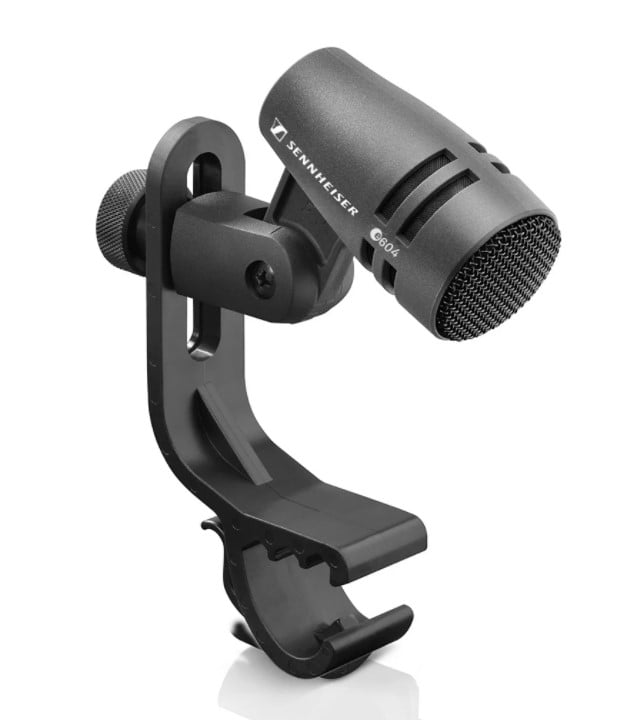
They’re cheap, rugged, and totally do the job.
You are probably going to buy 3 (if you have a 5 piece kit) so look for a bundle as it’ll make it even cheaper.
The e604s clip right onto your rims (but you can also mount them on regular mic stands) and are decent on both rack and floor toms, with a good transient response and a decent spill rejection. They’re common in live shows but have found their way onto smaller and budget studio rigs because you don’t need to buy microphone stands.
If you want a better frequency response or transient response than what this model provides, you can always upgrade to any of the other mics in this section. If you need something really clinical and high-fidelity, skip straight to the Earthworks DM20s.
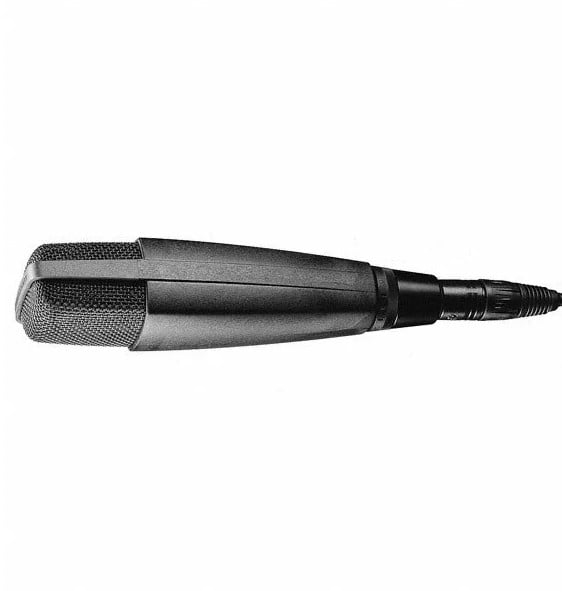
This is the classic tom microphone heard on countless records since the 1960s. This is also a really good addition to any studio as it’s a diverse mic that can work for vocals, guitar cabinets, and (some) brass instruments.
I have a love-hate relationship with this microphone. While it’s one of the nicest sounding mics to put on a tom (it has a nicer frequency response than the e604 and the transients come through better), the clip is a nightmare. Most of these, if not cared for properly, can detach from their clip mid-performance and fall on your toms. They are also huge, making them hard to squeeze into larger setups, or where the cymbals are low.
The only time you’d want to ‘upgrade’ from this mic is if you’re micing a floor tom and want an extended frequency response or more detail on the initial transient.
And, once more, if you are looking for a high-definition solution for the toms, the DM20 is the way to go!

The DM20 has one of the most defined transient responses from all tom microphones I’ve used (including the Josephson) and an incredible frequency response. The way this mic captures drum shells is the closest thing you’ll get to having your ear close to a rack tom (which I don’t recommend you do, by the way!).
The clip works exceptionally well on toms, the signal is clear, and it doesn’t overload preamps like some condenser mics.
If you know you’ll be recording clear, high definition drums all the time, look no further than this. But if you think you might be recording a lot of music that has that dirtier, big sound, you might get there faster with a dynamic microphone.
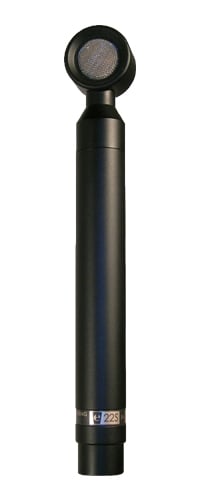
This is a really nice microphone. It’ll deliver low-level detail, exceptional transient response, and can handle a high SPL without distorting.
What sets it apart from the DM20 is that this has some of the feel you get with microphones like the U47. It brings in a tiny bit of saturation, and a little blanket over the whole thing, which makes it a bit warmer sounding than other mics (no doubt due to the slightly larger capsule size and the built-in transformer).
Worth the price tag? I’ll let you decide – but an option to keep in mind if you ever walk into a commercial studio that has a couple in their mic locker!
No need to repeat the above microphones: you can’t go wrong with the e604, MD421, Josephson, or DM20 on the floor toms. However, sometimes you want the floor toms sounding more like secondary bass drums. In this case, you might want to check out some alternatives.
(Note: If you purchased an Audix bundle, you will have the Audix D4, which is already tailored for floor toms and extended low-frequency responses.)
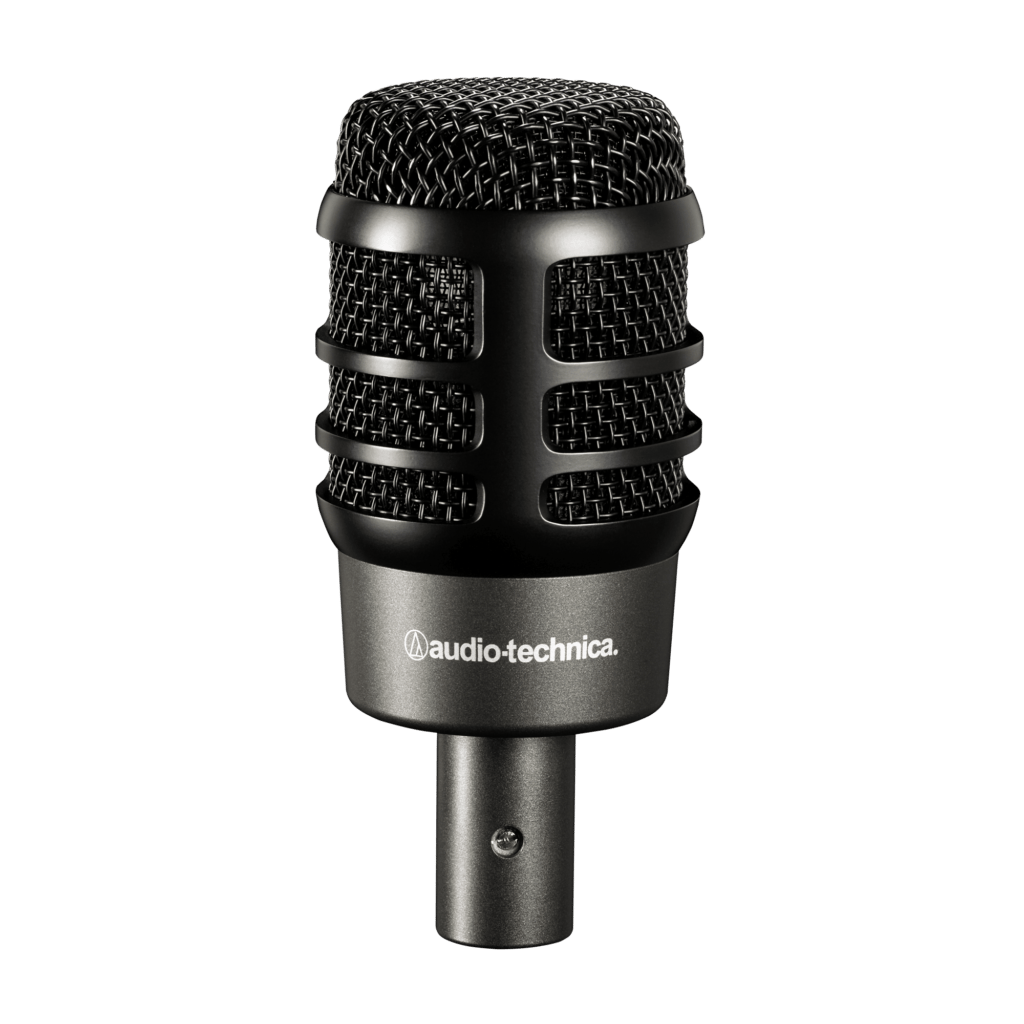
This mic is like an aggressive version of the Audix D6 that does very well on tight but extra low-tuned floor toms. It has a bit of an EQ and compression feel to it, which will help you get that low thump sound right off the bat.
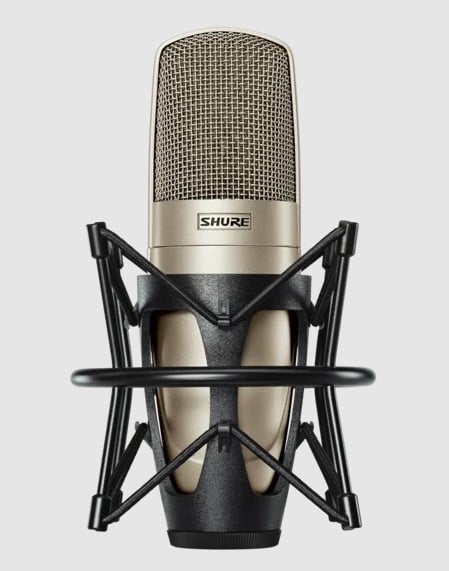
Compared to most other mics in this category, I find that the KSM32 provides a more accurate depiction of the resonance and decay of the floor tom.
Compared to bulky dynamic mics that offer compression at the expense of definition, a large diaphragm condenser like the KSM32 will provide clear attack while retaining detail from the room and shell.
Because this mic is more sensitive than the previous dynamic microphone options, try not to hit the cymbals too loud, especially if there’s a china or crash right above the floor tom.
This mic is also a great overhead, so its versatility is just one more reason to add this to your collection.

Not only is this a nice Kick Out microphone, but it performs well on floor toms. Save this one for softer players who have low tuned but wide open floor toms. Having said that, this microphone does have a good range of applications and will work well in most situations.
Overheads can be finicky. They can drastically change the sound of your kit.
Some engineers think of them as cymbal mics, while others approach them as an ‘overall picture’ of the drum set.
As if that choice alone didn’t have a huge impact on sound, then there’s the technical choices such as placing overheads as an AB or XY stereo pair, an ORTF rig, or going for a 3:1 rule with the focus on picking up the cymbals.
Ask yourself these questions when choosing overhead mics:
To reiterate, small diaphragm condensers are better for detail and precision, and large diaphragm condensers are better for more of a big, full-bodied sound.
In each section you’ll get a pair choice for bright and dark options for a variety of budgets.
And don’t forget: for most applications (and if you want your cymbals to have a nice stereo spread on your tracks) you’ll need at least 2 microphones. Get a matched pair if you can!
| Recommended Overhead Microphones | ||
|---|---|---|
| Brand/Model | Large/Small Diaphragm | Price |
| Aston Origin | Large | $299 |
| AKG C414 | Large | $1099 |
| Sontronics Aria | Large | $1499 |
| Neumann U47 | Large | $4000 |
| Sontronics STC1 | Small | $199 |
| Fostex MC10ST | Small (Pair) | $150 |
| AKG C451 | Small | $549 |
| Neumann KM84 (KM184) | Small | $799 |
| DPA 4011 | Small | $1799 |
| Shure KSM141 | Small | $399 |
| Earthworks SR25MP | Small (Pair) | $619 |
| BeyerDynamic M160 | Ribbon Microphone | $699 |
| Coles 4038 | Ribbon Microphone | $1365 |
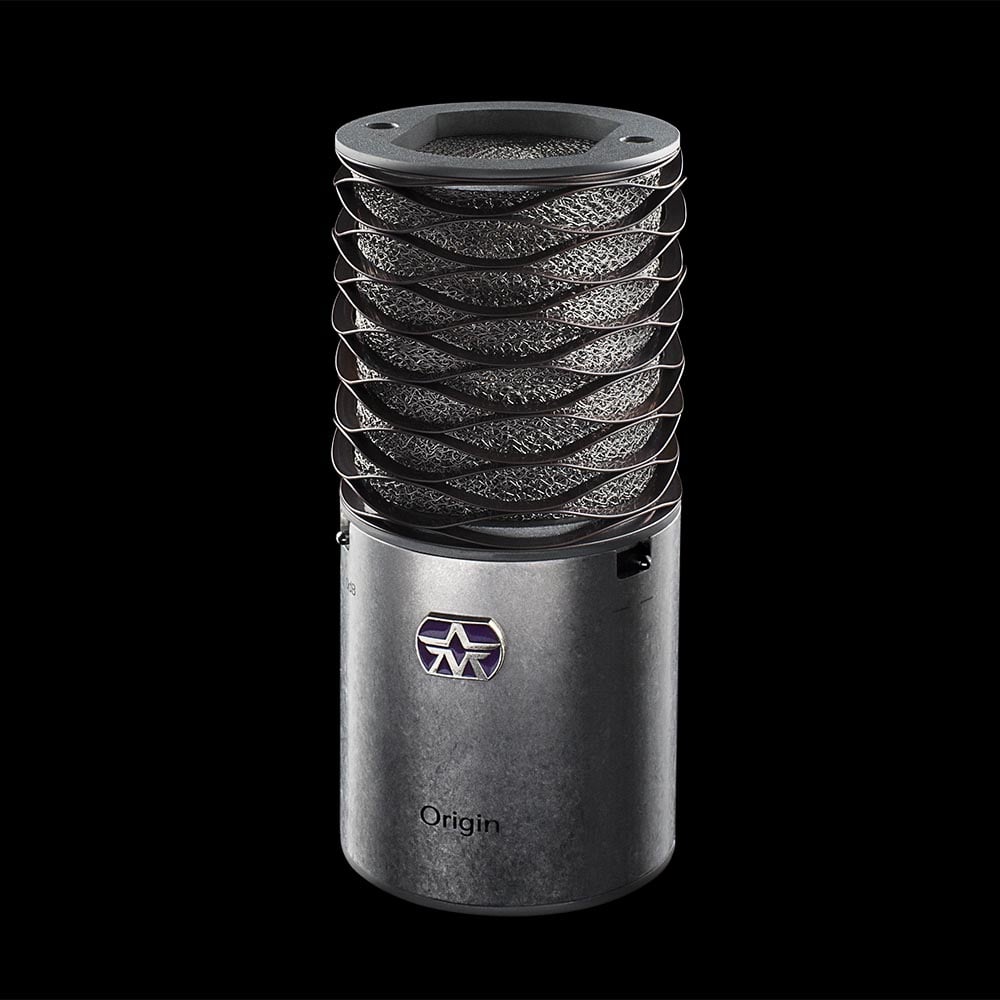
This is one of the best large diaphragm condenser mics I’ve come across at this price point.
I wouldn’t take it on the road (the mesh around the capsule feels fragile), and I’d invest in a shock mount as the built in thread can make it awkward to position the microphone.
I bought a pair when my AKG C3000 and C214 started showing signs of age, and I’ve used them in my home studio as my overheads ever since, paired with the Rycotte USM shock mounts.
This is an amazing starting point for the price, and depending on your room and cymbals, this mic should set you up for quite a while.
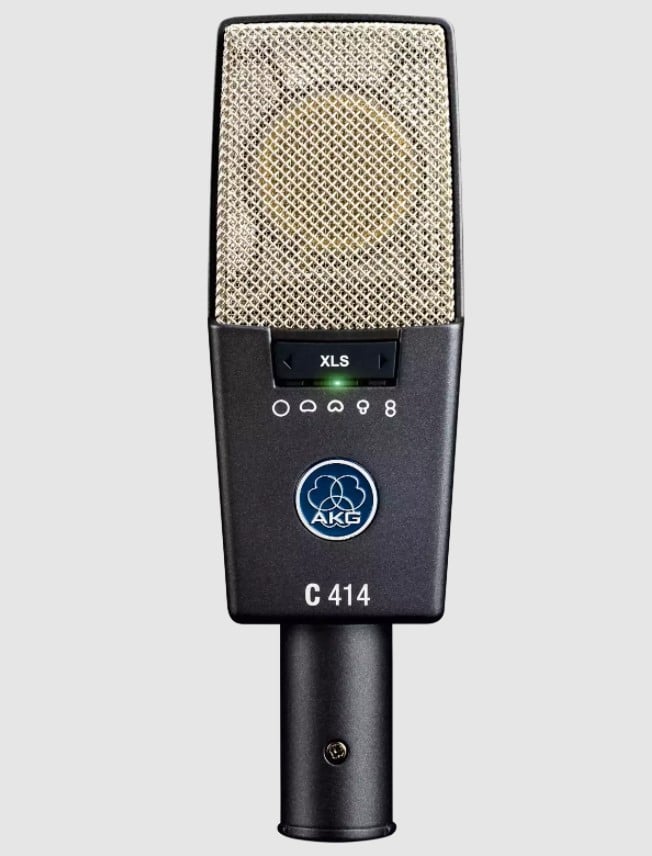
There are two models, but I recommend sticking with the XLS.
This is probably the most widely used all-purpose large diaphragm condenser microphone out there. You’ll probably find this mic as an overhead at a lot of live shows and commercial studios, and used for everything from overheads to guitars and vocals
I find this microphone to sit in between a small diaphragm and a large diaphragm mic in terms of sound, so it feels to me like it doesn’t do either very well, in addition to being quite bright. Opt for something else if you prefer a darker sound.
In the same price range, I’d recommend the Neumann TLM103. It has a bit more bottom end and more of the big room feel, with a top-end that isn’t as pronounced (but still present).
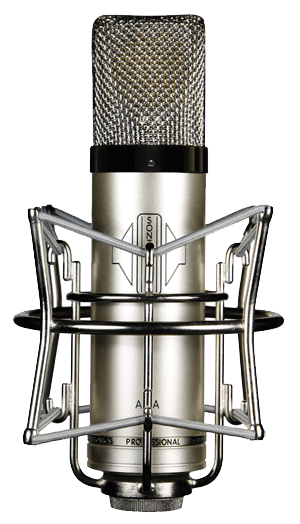
I really like this mic as an overhead. It has slightly more body and presence and that ‘big room sound’ than the AKG C414 (XLS/XLII), and it’s closer in performance to the vintage C12, with a bright detailed character.

If you’re looking for something truly special – the kind of thing people look for in high-end studio lockers – the first versions of the Neumann U47 microphones are incredible. They have a nice saturation and a top-end that’s so smooth your cymbals will sound like butter to your ears.
But like the original Neumann U67 and AKG C12, most of these will be unobtainable, and only engineers and some musicians will notice and appreciate the improvement over other models.
While we’re dreaming of some of the nicest microphones on the planet, other mics in the same category would be the Neumann U67, AKG C12 (original), and the Sony C800.

There are plenty of small diaphragm condenser microphones in this price range (and cheaper), but they’re versatile and beat out other commercial offerings. Even when you aren’t using these for overheads, you can still use STC1s as cymbal spot mics, on guitars, marimbas, percussion, you name it.
I bought a pair when they were released in 2005, and for the next 3 years I used to carry these in a fabric pencil case in my backpack every day, bringing them to shows in the scorching sun and freezing rain, and they work perfectly after over 15 years. The only downside is if you’re working in a bright room with bright cymbals, these overheads can be pretty bright.
You could upgrade these to the AKG C451s, but I find it pretty hard to justify the price difference.
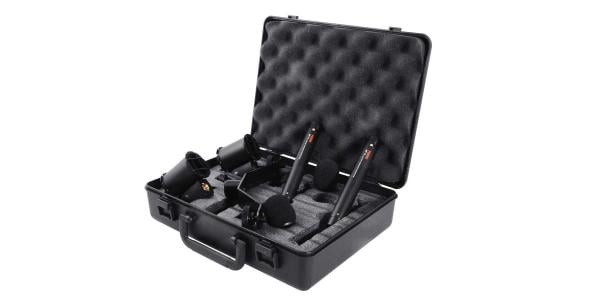
Not as bright as the STC1s, this is the smoothest little pair of small diaphragm condensers I know at a price that won’t break the bank.
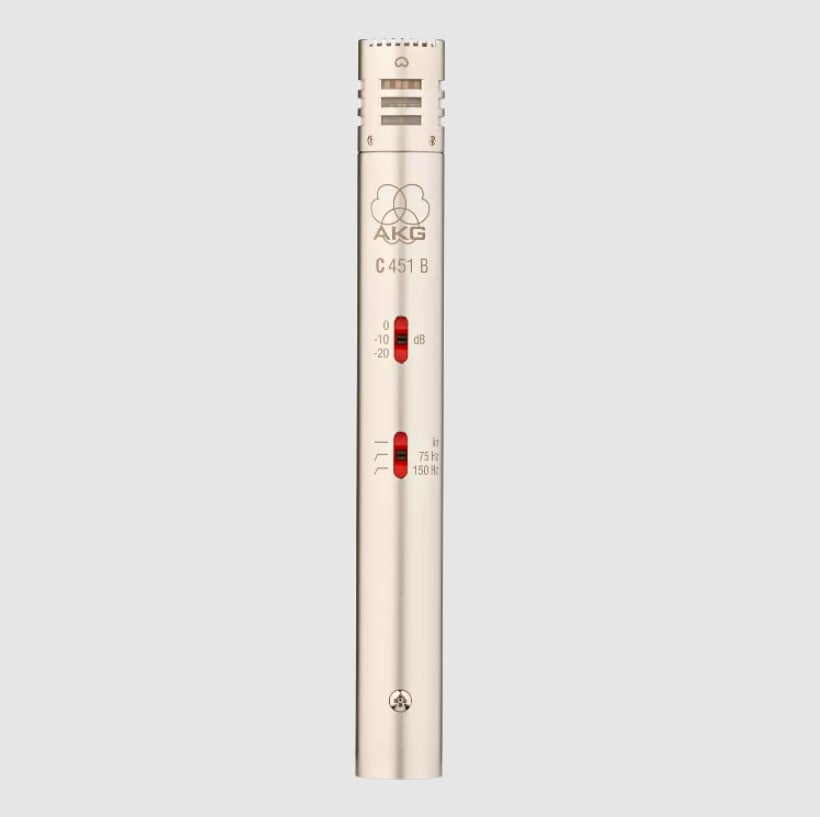
This is a classic overhead microphone. If you decide to upgrade or swap it for a large diaphragm overhead, you can always use the C451 for hi-hats, ride cymbals, snare drums, or miscellaneous percussion.
It has a bright, detailed sound that’s very focused, but also a bit harsh. You might want to consider some of the upgrades from here: Neumann KM184, Shure KSM137, and KSM141, or the incredible Earthworks SR25.
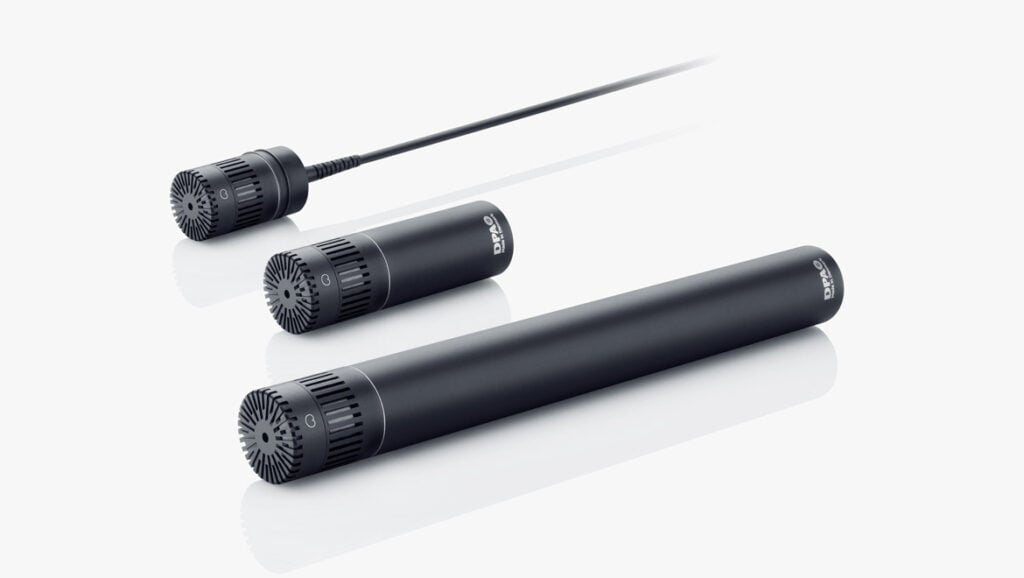
This is one of my favorite spot mics of all time, and also dubs really well as an overhead pair.
It can be put super close to sound sources with no real issue, and has incredible spill rejection.
Both the frequency response and the phase response are so good that it’s become a favorite for spot-mic duties in large orchestra recordings. And it’s fully configurable too (you can change the body size).
While it comes with a large price tag, it’s one of those classic mics that are used in environments where you can’t put a price tag on quality.
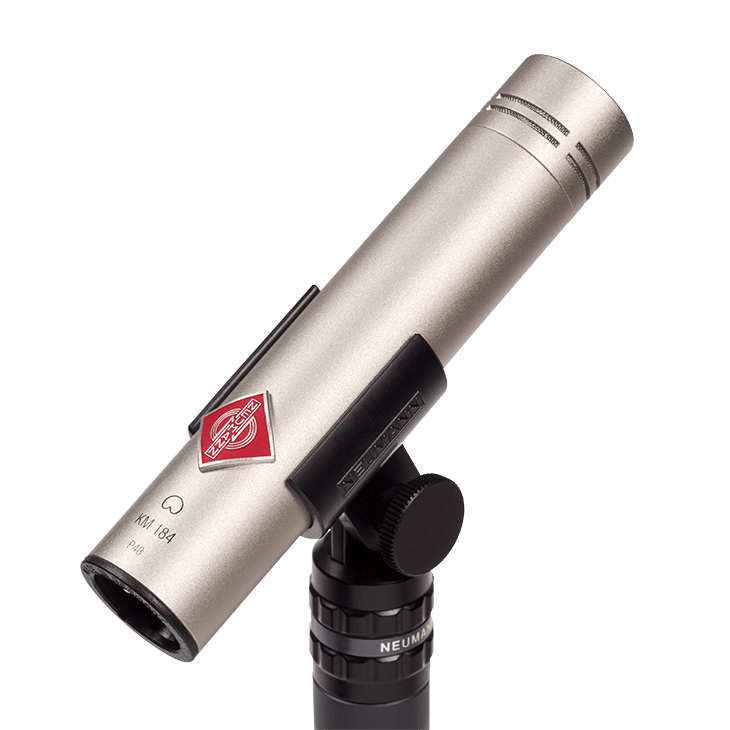
Although the KM184 reissues are very different from the KM84, these are really nice overhead mics (and spot mics!). No harshness and a ton of detail. Because it uses a transformer as part of its design, you get a nice soft saturation to it.
This model is worth every penny if you’re upgrading from the STC1 or the AKG C451.
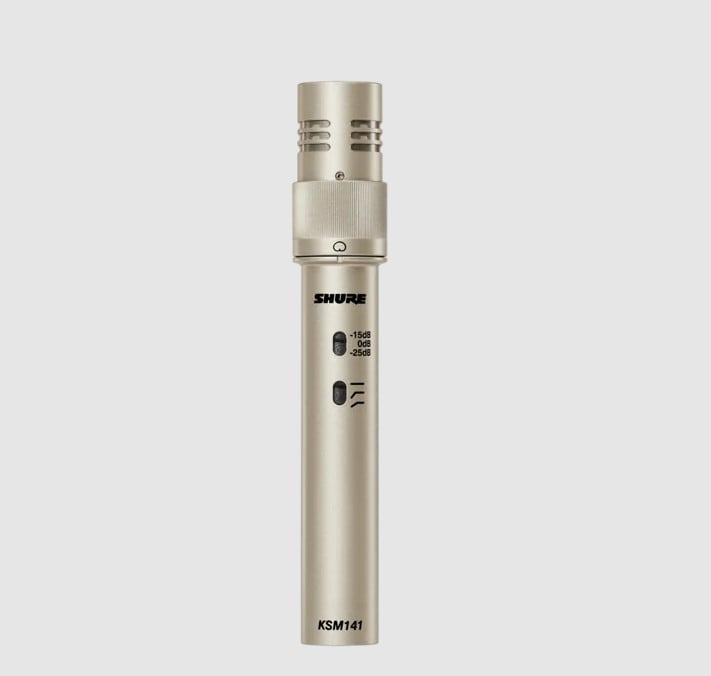
Another good offering when it comes to small diaphragm options is the KSM141 (and the cheaper alternative, KSM 131). The 141 is a well-balanced small diaphragm condenser that offers lots of detail without being overly bright.
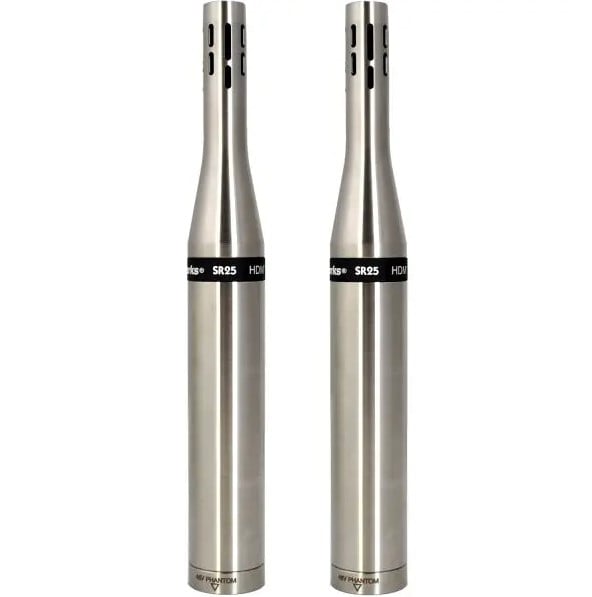
One of the most detailed and flattest microphones I’ve come across, a pair of SR25s gives you an excellent stereo image and detailed transients and tails from cymbals and shells alike.
It’s hard to see any other microphone compete in the same category unless you want a slightly different sound (eg. the slight saturation from a Neumann KM84, or the big sound offered by large condenser microphones). This mic has it all, despite being slightly more expensive than other options.
If you do decide on the SR25s as your overhead pair, make sure you buy a matched pair as it helps increase the definition when used in stereo pair configurations (XY/AB/ORTF).
Ribbon mics are special because they use a magnetic strip suspended between magnets to capture sound equally from the front and the back of the microphone (also known as the ‘figure-8’ directional pattern).
Because of this configuration, they can be trickier to use than other mic types. If your ceiling is too low, and made out of hard and smooth materials like concrete, glass or tile, this could actually cause problems for your recording.
But if your room allows it, ribbon mics can be magical as overhead pairs:
If you’ve never used a ribbon microphone before:
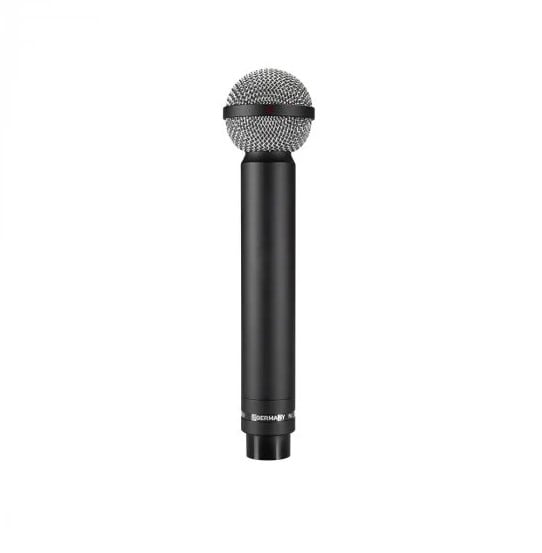
While there are cheaper options, this is the first one I would feel comfortable recommending as a ‘budget’ ribbon microphone for overhead duties (see the room mic section for a cheaper ribbon mic).
The M160 has been around for many years and you’ll often encounter it in smaller studios. It’s a good choice if you want a darker drum sound without shelling out for the Coles 4038.
Having said that, the Coles are fantastic and will always be the preferred upgrade path from the M160s.
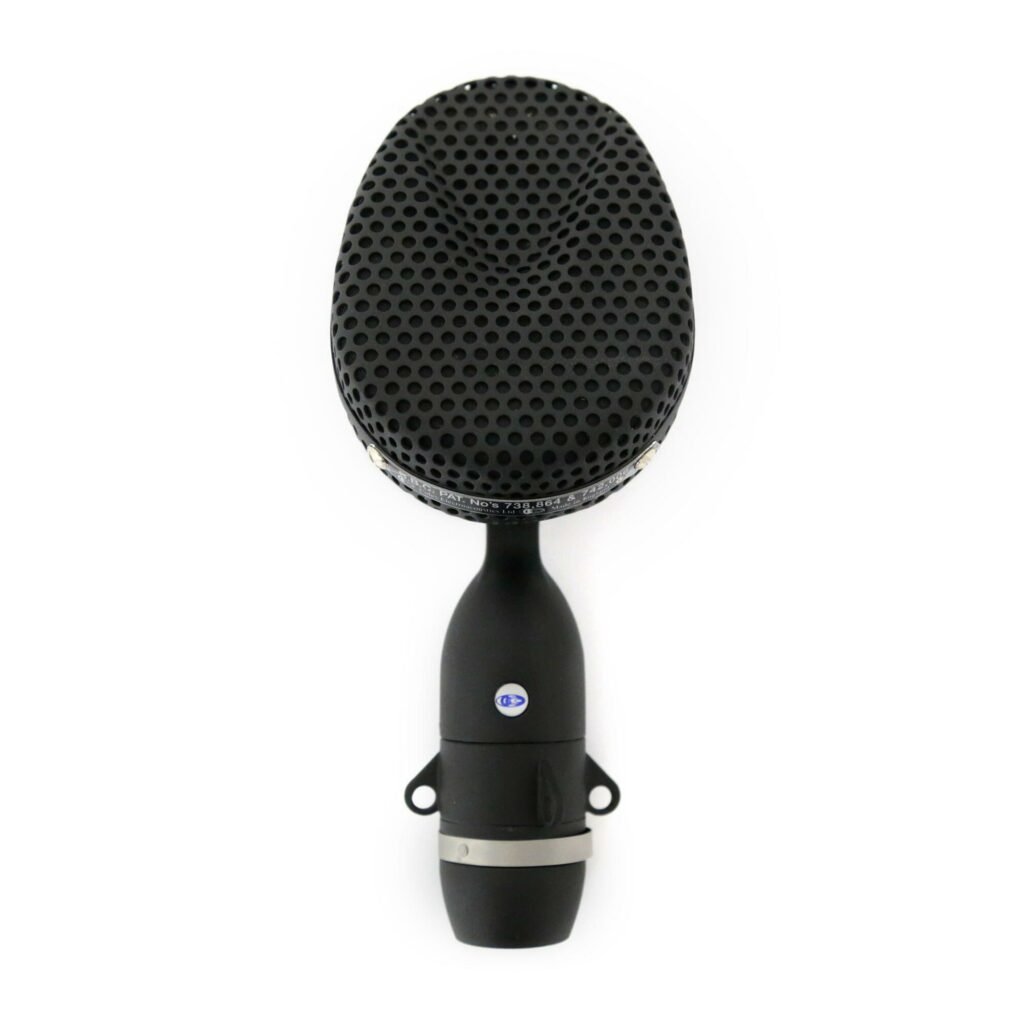
The Coles is the classic ribbon microphone used in overhead setups. These beasts are heavy, so make sure you have 2 solid, high quality microphone stands available when purchasing or renting a pair of these for your recordings.
Even though this model comes with a heavy duty casing, it’s still a ribbon mic, so handle with care.
Small diaphragm condensers are typically favored for this role because they’ll let you capture articulation and detail. I recommend the DPA 4011A, or the Neumann KM184 if you want something warmer. On a budget, the Sontronics STC1 or the AKG C451 will do just fine.
However, dynamic microphones can help tame bright, harsh-sounding hi-hats. For this, I’d recommend the Shure SM7B and Shure SM57.
If your drum kit has a series of other percussion pieces like cowbells, chimes, or timbales, here are some tips for choosing the mics:
Is the source of the signal loud?
If you absolutely have to mic up that cowbell or those timbales, you can probably get away with a dynamic microphone like the SM57. In fact, the SM57 might be your preference for ‘anything else’ around the drum kit.
Is the source of the signal either really quiet or bright and articulate?
You might want to consider a small diaphragm microphone like the DPA4011, KM184, Sontronics STC1, or AKG C451. Bear in mind that the more condenser mics you have around the kit, the more spill you’ll have (which will make the mixing process harder).
Rooms are an essential part of the drums’ sound. Unless you’re in a small studio with a lot of absorption, you should absolutely invest in room mics.
For this role, you’ll need either large diaphragm condenser mics or ribbon mics (the latter because their figure-of-eight pattern), as they can capture the nuances of all the tails and the reflections of the sound being bounced around in the room much better than any dynamic microphone.
Any of the large diaphragm condensers we’ve discussed in previous sections will do, but I prefer the AKG C414 (because of the multiple patterns), the Neumann U47 or U67, and the AKG C12. You should also consider ribbons like the Coles and the Royers (see below).
Here are a few other alternatives that work really well as room microphones:
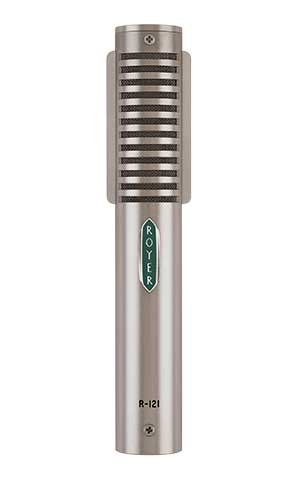
These are dark but detailed room mics. They capture a lot of the room sound and almost give it a slightly compressed vibe.
I recommend getting two R121s and setting them up on top of each other. This is a popular stereo recording technique known as Blumlein, which lets the engineer get a good stereo image of the kit but also pick up a fair amount of room tone. But they also work well as a spaced pair in an AB configuration.
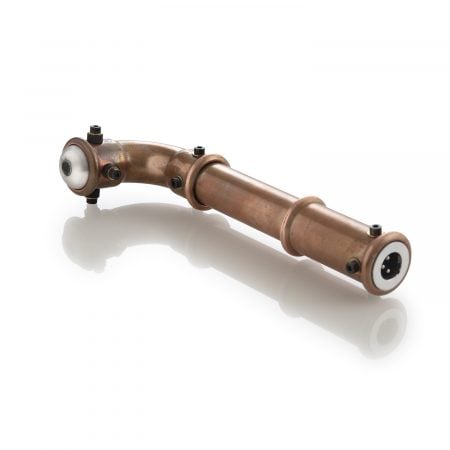
Here’s something completely different: a microphone in a copper tube that has a built in compressor and that looks like it came from under your kitchen sink.
Room mic signals are often squashed with brutal compression settings, so this model does it for you.
Check out some photos of one in action!
This is not a lo-fi microphone, as it’s an omnidirectional condenser mic that can capture everything from the low end of your kick drums to the high end of your tambourine. But at the same time, it’s designed to change frequency response and dynamic response in non-linear ways, so it’s hard to predict how it’s going to sound until you hear it.
You don’t need to break the bank for a good drum sound. If you’re new to all this, start with a drum mic bundle and use the remainder of the guide to upgrade as you move forward.
Think about the kind of music you’ll mostly be recording, and what kind of content you’re producing. If you decide to get a bundle, don’t forget to budget for extra microphones (like an extra snare mic, or overheads), cables, and microphone stands.
If you’re trying to define your own sound, contact your local shop or distributor and see if they’d let you borrow a couple of different mics from the list so you can make the choice yourself. You might actually prefer the loose feel of the AKG D112 over the Shure Beta52, and the Shure Beta91 might be too clean for your kick sound needs!
Also, don’t get too caught up on the hype train. Sure, it’s a ton of fun to record with legendary U47 and C12 microphones and it’s great when you can hear the difference they make to your overall sound, but a lot of listeners won’t be able to hear the difference.
I hope you have a better idea on how to plan for your next microphone purchase. Have fun recording, and don’t hesitate to hit me up if you’d like more suggestions or have comments about the article.
Want to look at your options in one convenient, easy-to-browse place? Click here for a table that compares models, prices, uses, and more.
*This article contains affiliate links, which means we might earn a small commission from the product seller if you make a purchase. For more info, check out our privacy page.
Articulation – This parameter describes how every single note or sound should sound. There are a number of words that can be used to describe how long or short a note should be, how soft or sharp the attack should be, or even if the pitch and timbre should be modified. Common articulations are legato, staccato, marcato, and tenuto for full strokes, ghost notes, rim shots, side sticks, etc.
Compression – A term used in sound engineering to illustrate the process of controlling dynamic range in an audio track. Compressors will listen to the input signal and turn it down as it goes above a certain threshold. There are other pieces of equipment that will also compress an audio source: certain mics can clip the attack or transient of a sound source, tape machines can compress audio being recorded, and valve equipment and other distortion/saturation devices will naturally impart some degree of compression on a sound source.
dB SPL – A decibel scale based on the sound pressure level. It’s a scale that allows us to indicate how loud a sound is, comparable to a unit of reference (Pascal, which measures pressure). Acoustic drum kits usually sit between 80dB and 110dB SPL, depending on who’s playing, how well the kit is tuned, and the room it’s played in. It’s not uncommon for a well-tuned kit, in the hands of a heavy-hitting drummer, in a very small room, to reach SPL levels above 120dB.
Diaphragm – A thin material that vibrates sympathetically with the sound waves carried through the air. Condenser microphones use very thin conductive diaphragms made of gold, aluminum or copper, while dynamic microphones use mylar or other polyester films for their diaphragms. On a condenser mic, the diaphragm is also the transducer, while on a dynamic microphone, the diaphragm moves a coil, making the microphone less sensitive and less responsive to transients.
Frequency Spectrum – The range of frequencies that humans can hear, which goes from 20Hz to 20,000Hz (20kHz). The lower the number in Hertz, the more bass or low pitched the sound is. The higher the number, the more treble or high pitched the sound is.
Headroom – A technical specification that describes how loud a signal can get above standard operating levels for a specific piece of equipment. While some classic Neve preamps can have close to 30dBu headroom (dBu is a measure of signal in volts), some Behringer preamps will only give you +10dBu.
Phantom Power – A feature included in most mixing consoles, preamps, and interfaces (with preamps) that provides +48v (Volts) to the microphone alongside the signal. It’s a way to power mics without the use of an external power supply or power cables. Some older and modified mics might not be compatible with phantom power, so always check before turning it on.
Phase – When two nearly identical signals combine, any timing difference between the two signals can have deep, adverse effects on the resulting (combined) sound. The effect can drastically change the frequency response of the original signals, canceling or boosting one or more frequencies on the original signal. When talking about phase issues between two or more mics, the lower frequencies are usually the most problematic due to the distance between microphones.
Proximity Effect – With some microphones, the closer you move it toward the sound source, the more low end (bass) you’ll get. This can be either problematic or a tool for sound shaping. When recording snare drums, your snare might be too boomy and clash with the bass guitar, kick drum, or even vocals. On the other hand, if the toms are thin and high pitched but you want a bigger sound, getting the microphone closer can give you the boom that you didn’t hear at first listen.
Spot Mic – A microphone that’s placed very close to the rim of a drum shell or cymbal near the point of impact. The sole purpose of these mics is to capture the sound more accurately with minimal sound coming from the rest of the room.
Tail – A colloquial term used to describe the release portion of a sound. Every sound has 4 stages of dynamic: ADSR (Attack, Decay, Sustain and Release) and when we hit a cymbal or a drum, we have a very fast and loud attack, followed by a very small amount of decay, no sustain (we can’t keep the drum ringing), and a release that will be characteristic of the drum shell/tuning or the cymbal size, shape and weight. When we want to capture the “tails” of the drum sound, we usually mean how that release rings out throughout the room until it dies. This term is also commonly used for reverbs.
Transient – A high amplitude and short duration sound. In music, sounds typically start with a transient and then decay or sustain (like a hammer hitting a piano string). A drum’s waveform is almost exclusively a transient pulse that dies off really quickly.
Transducer – A device that turns energy from one form into another. Acoustic energy – like the sound waves traveling through the air after a drum is struck – can be converted into electric signals (voltage) by a microphone. While most people consider the microphone as a whole to be a transducer, it’s really the diaphragm. The type of transfer mechanism is what differentiates dynamic, condenser, and ribbon microphones. For dynamic mics, a layer of mylar attached to a moving coil acts as a transducer, and for condenser mics, a super thin, electrically charged plate hovering over a back plate works as a transducer. A ribbon mic uses a thin strip of aluminum suspended between two magnets.
XLR Cable – A popular type of connector that carries balanced audio signals from microphone level to line level. In microphone applications, the cable carries the signal, an inverted copy of the signal, and a reference ground often used as a shield to protect the signal from any interference.
João Lebre is a freelance mixing engineer at caffeinatedaudio.co.uk and drummer based out of London, UK. He has toured as drummer and FOH engineer, designed and commissioned world class studio installations, and lectured a range of audio engineering topics for SAE London. João is a passionate music instructor and is truly obsessed with gear.


By signing up you’ll also receive our ongoing free lessons and special offers. Don’t worry, we value your privacy and you can unsubscribe at any time.
We use cookies for traffic data and advertising. Cookie Policy »